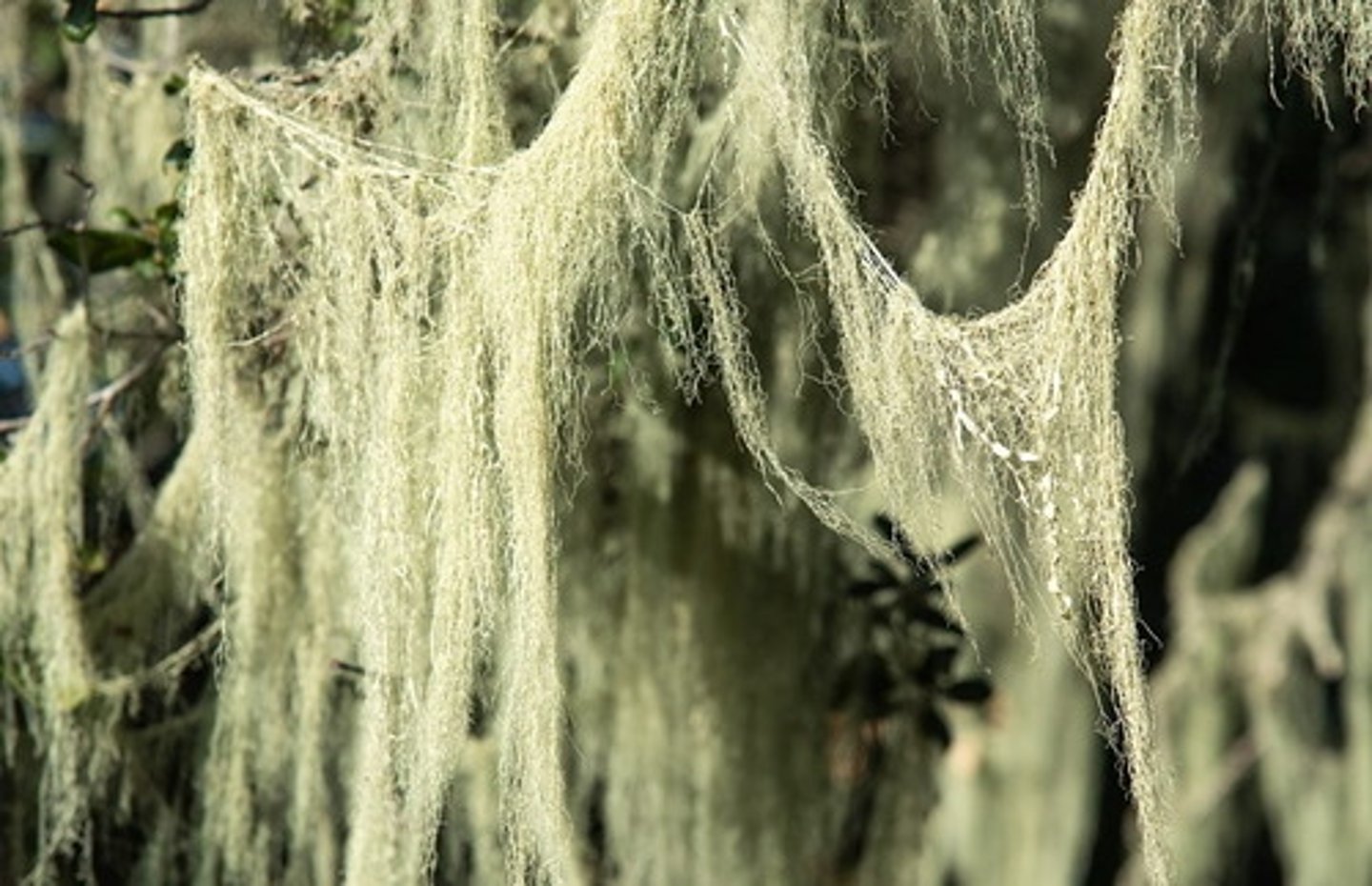BIO 114: Plant Species and their habitats/plant communities
1/65
There's no tags or description
Looks like no tags are added yet.
Name | Mastery | Learn | Test | Matching | Spaced |
|---|
No study sessions yet.
66 Terms
California sycamore
Platanus racemosa (riparian)
Leaves: Palmately lobed, alternate phyllotaxy.
Bark: Mottled, peeling bark reveals white, gray, and green patches.
Unique Features: Sycamore seed balls hang like ornaments; attracts various birds.
Historical Use: Native Americans used bark for medicine and leaves as a covering.
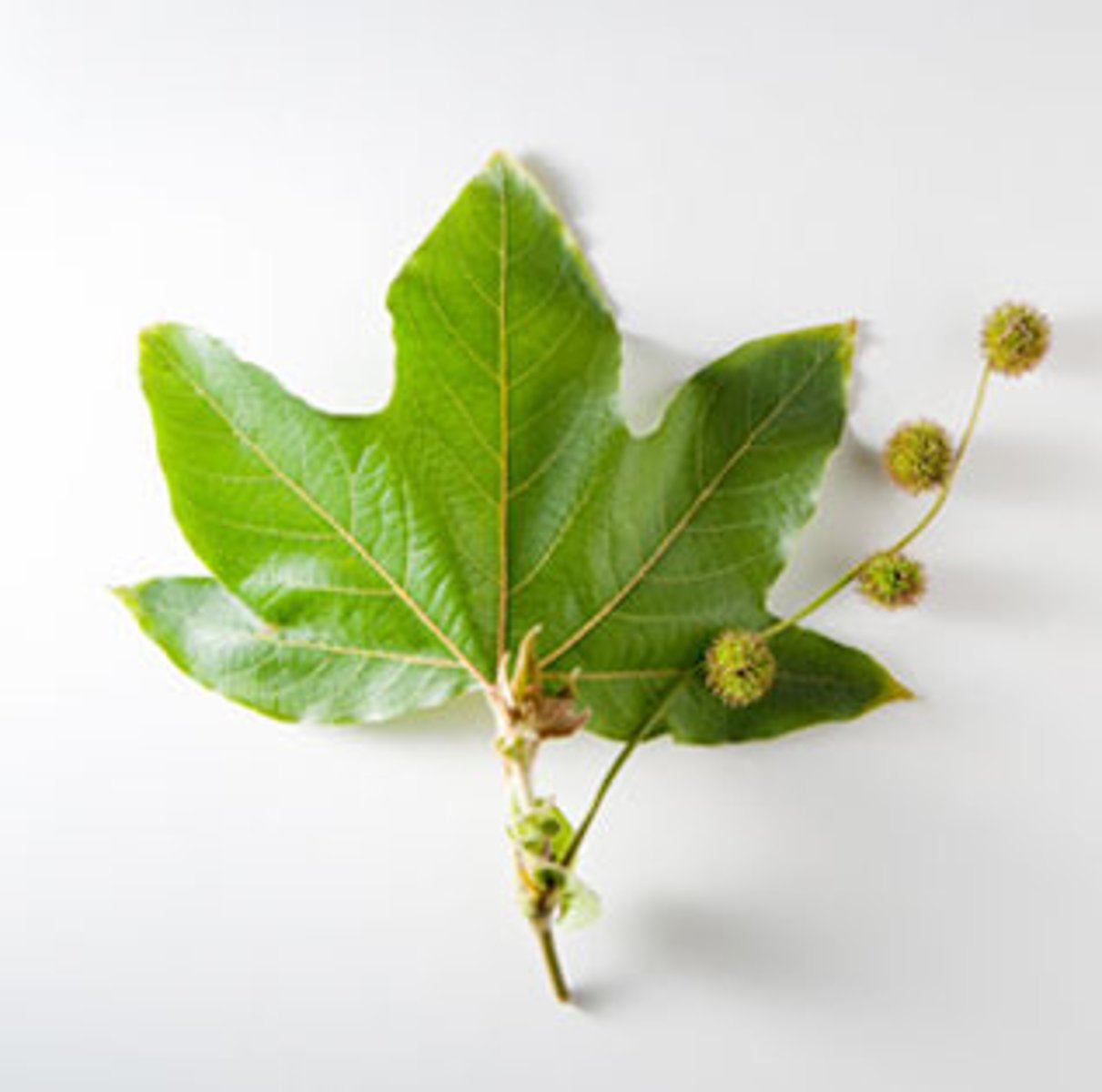
California sagebrush
Artemisia californica (coastal scrub)
Leaves: Deeply lobed, thread-like, and aromatic when crushed.
Growth: Shrubby, with a silvery-green appearance.
Ecology: Hosts pollinators like bees and supports birds.
Use: Traditional use as an herbal remedy.
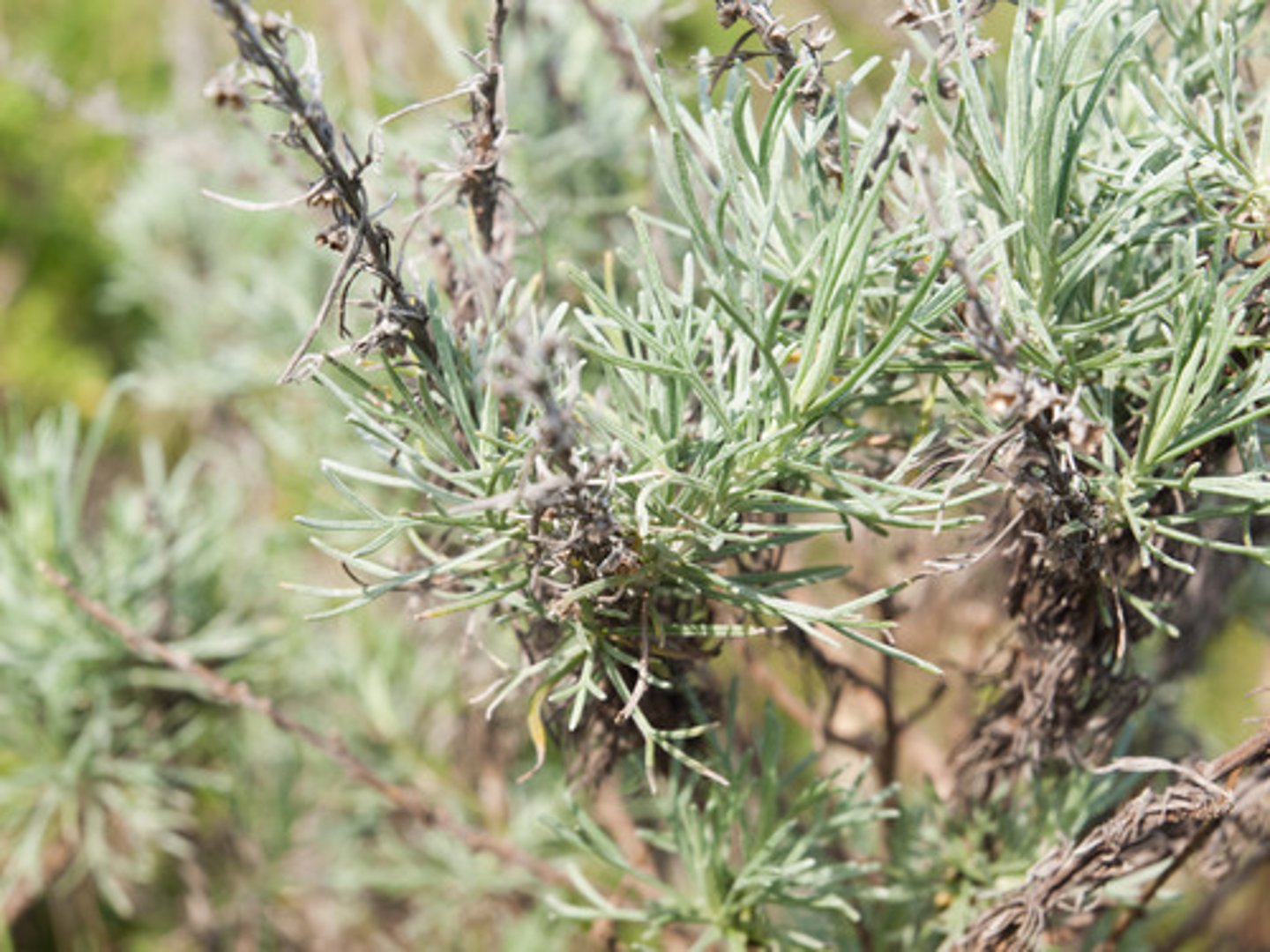
Black Sage
Salvia mellifera (coastal scrub, chaparral)
Leaves: Opposite, aromatic, rough texture, with rolled-under margins.
Flowers: Pale lavender in whorled clusters; attracts bees, hummingbirds.
Ethnobotany: Medicinal herb for colds and teas.
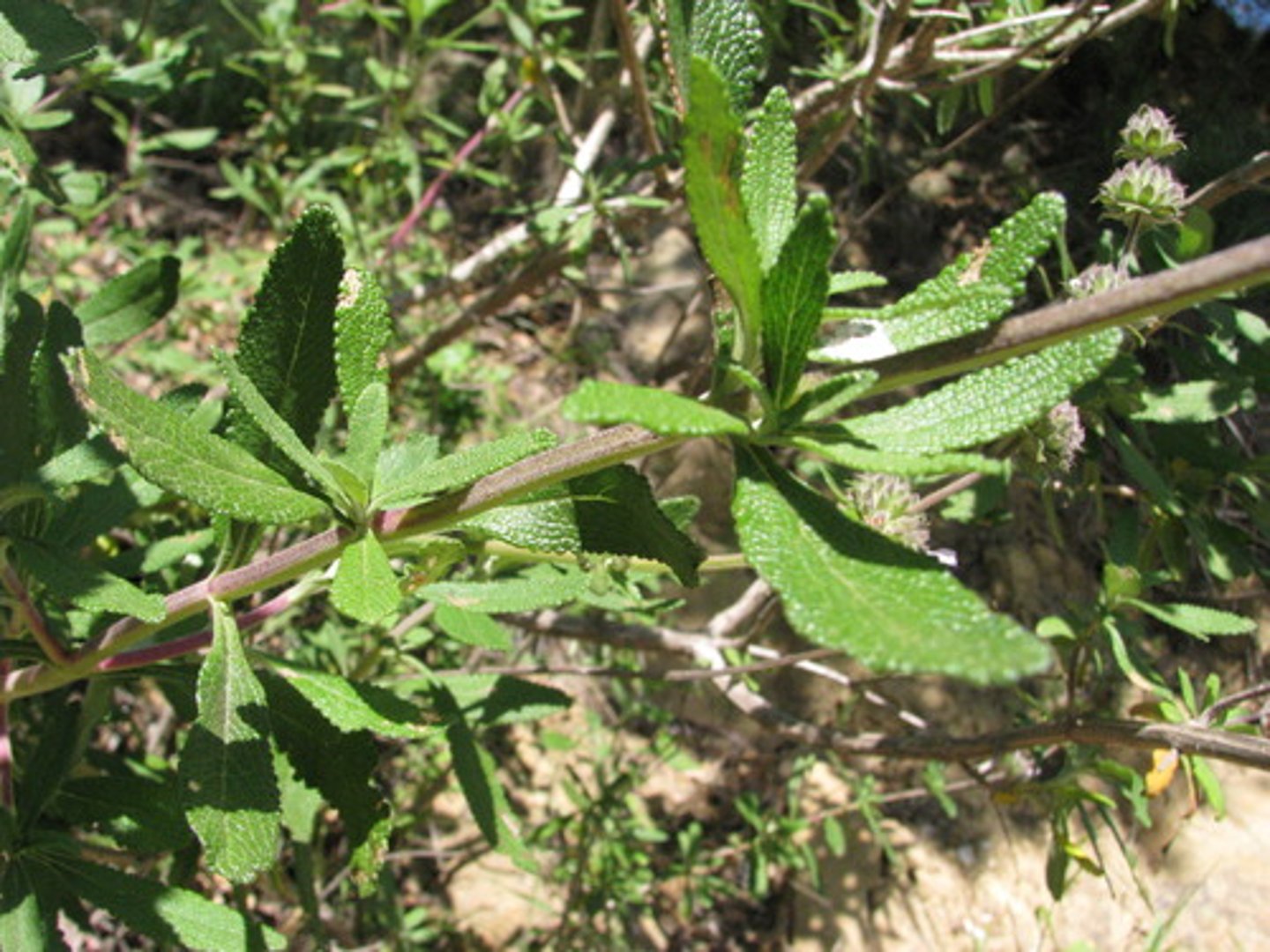
Coyote brush
Baccharis pilularis (coastal scrub)
Leaves: Small, alternate, toothed margins.
Flowers: Dioecious, small fluffy seeds.
Role: Pioneer species in disturbed areas.
Wildlife: Hosts insects, supports birds.

Arroyo willow
Salix lasiolepis (riparian)
Leaves: Long, lance-shaped, alternate with serrated margins.
Flowers: Catkins; early-season pollinators visit.
Use: Basket weaving by Native Americans.
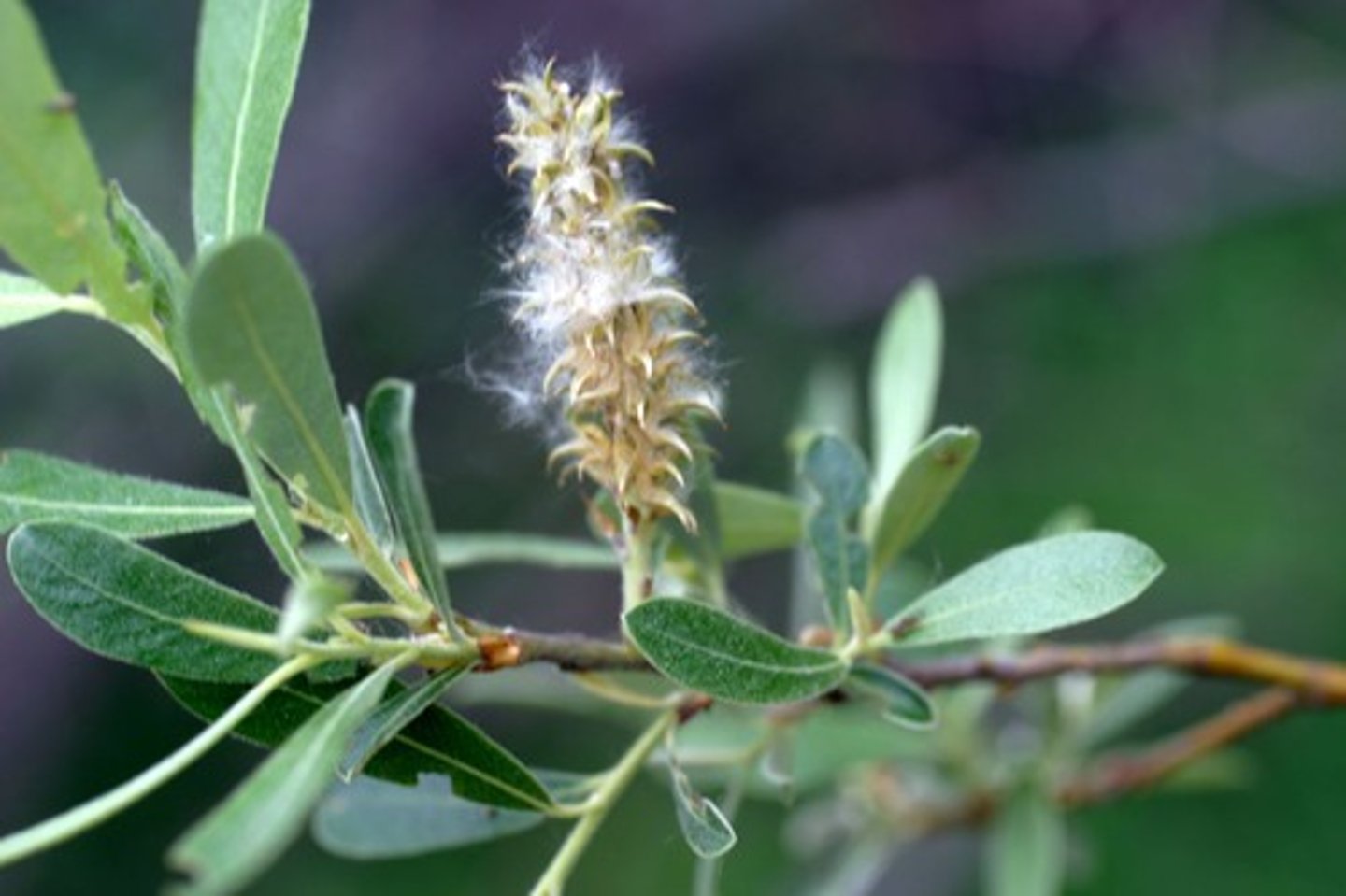
Coast live oak
Quercus agrifolia (oak woodland)
Leaves: Spiny-edged, oval, evergreen.
Acorns: Important food for wildlife.
Ecology: Supports fungi, lichen, and nesting birds.
Ethnobotany: Acorns processed into food by Native Americans.
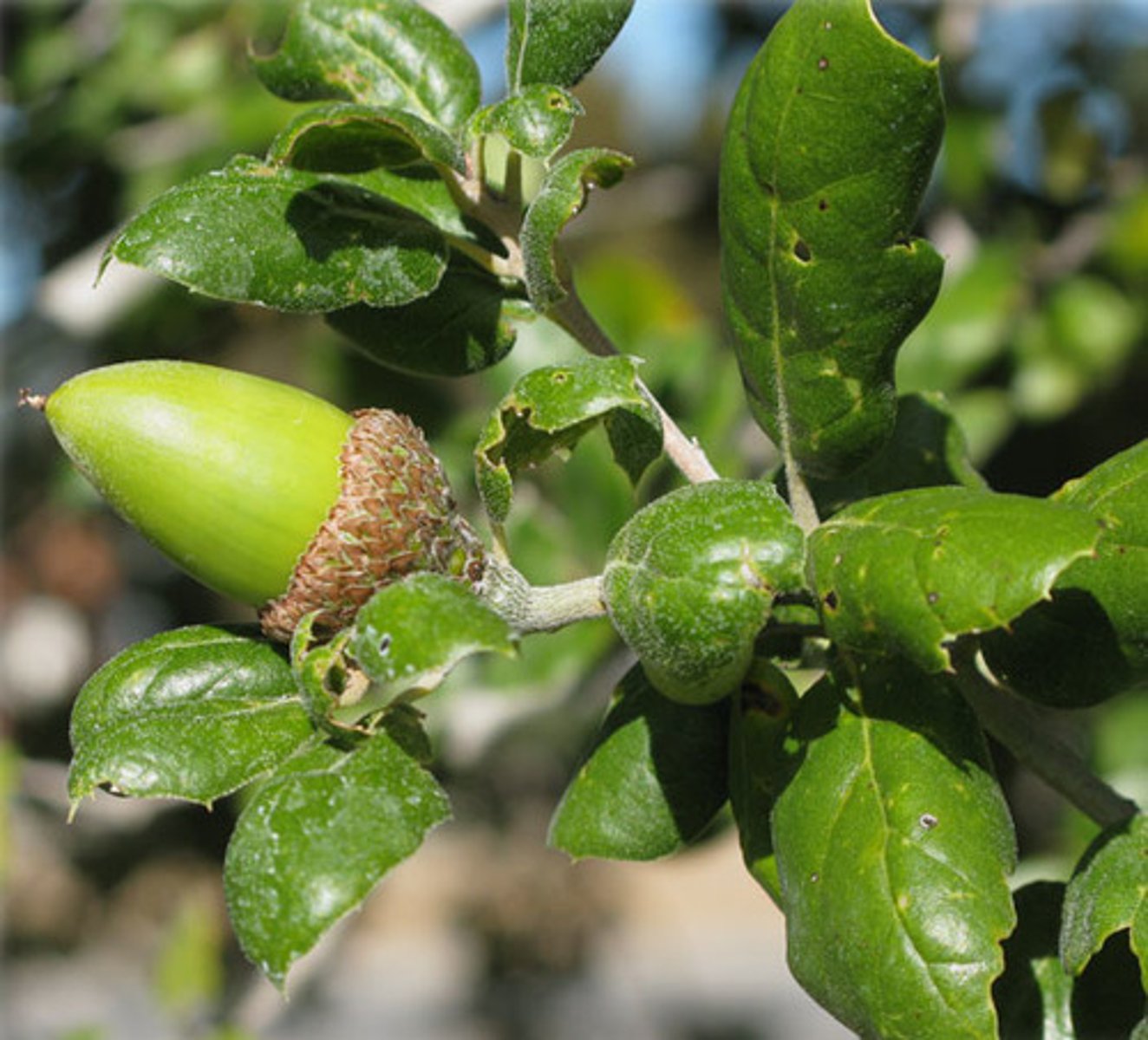
California bay laurel
Umbellularia californica (riparian/oak woodland)
Leaves: Lance-shaped, highly aromatic when crushed.
Fruit: Round, green to purple drupes.
Use: Culinary and medicinal applications.
Ecology: Host plant for swallowtail butterfly larvae.

Poison oak
Toxicodendron diversilobum (Many plant communities from oak woodland to coastal shrub ... etc)
Habitat: Many plant communities.
Leaves: “Leaves of three, let it be,” lobed, shiny.
Toxicity: Causes rash on skin contact.
Ecology: Berries feed birds, leaves support insects.
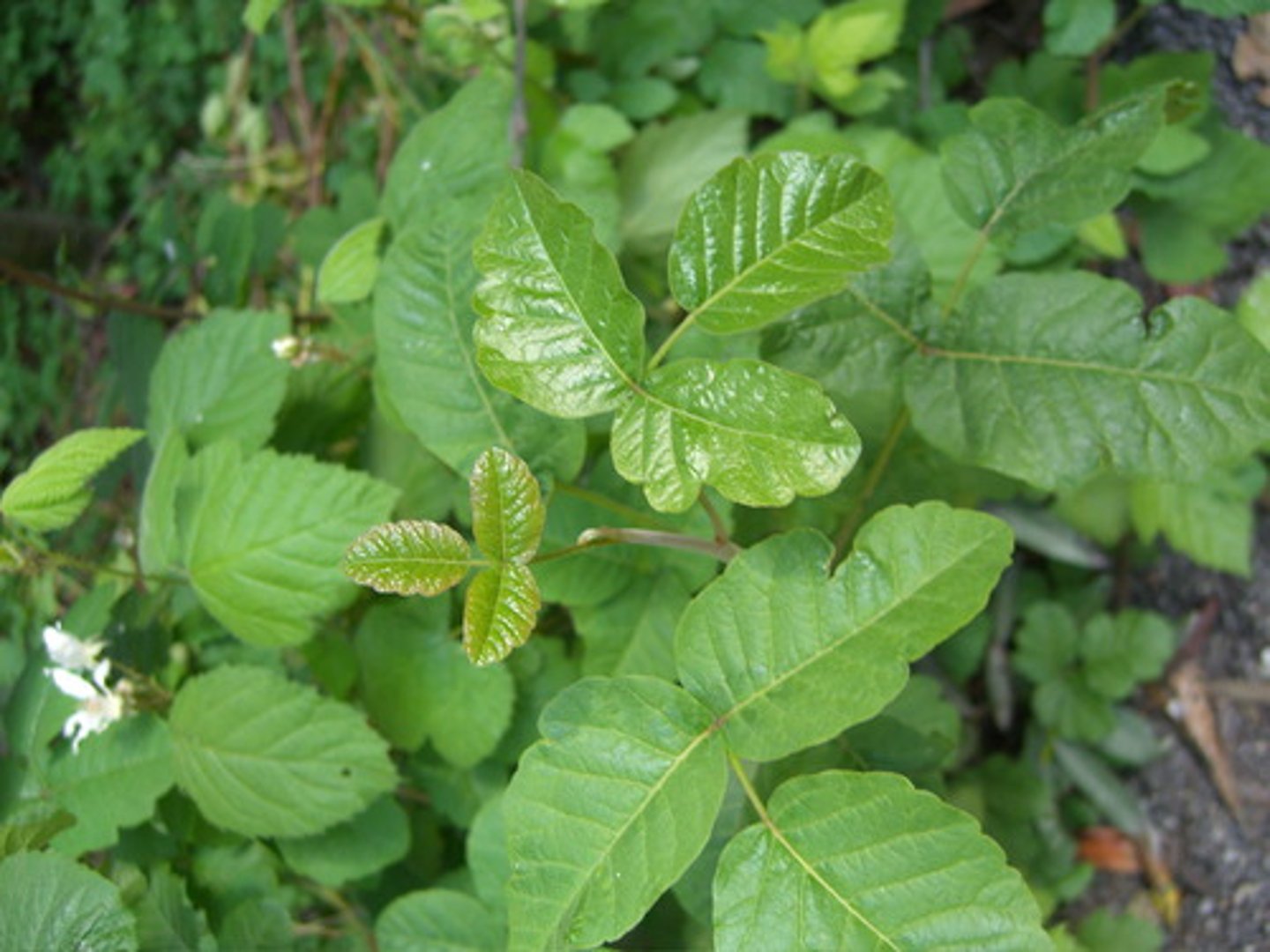
Chaparral yucca
Hesperoyucca whipplei (chaparral, serpentine rock outcrop)
Leaves: Sword-like, rigid with sharp tips.
Flowers: Tall spike with bell-shaped white blooms.
Pollination: Moth-pollinated (yucca moth).
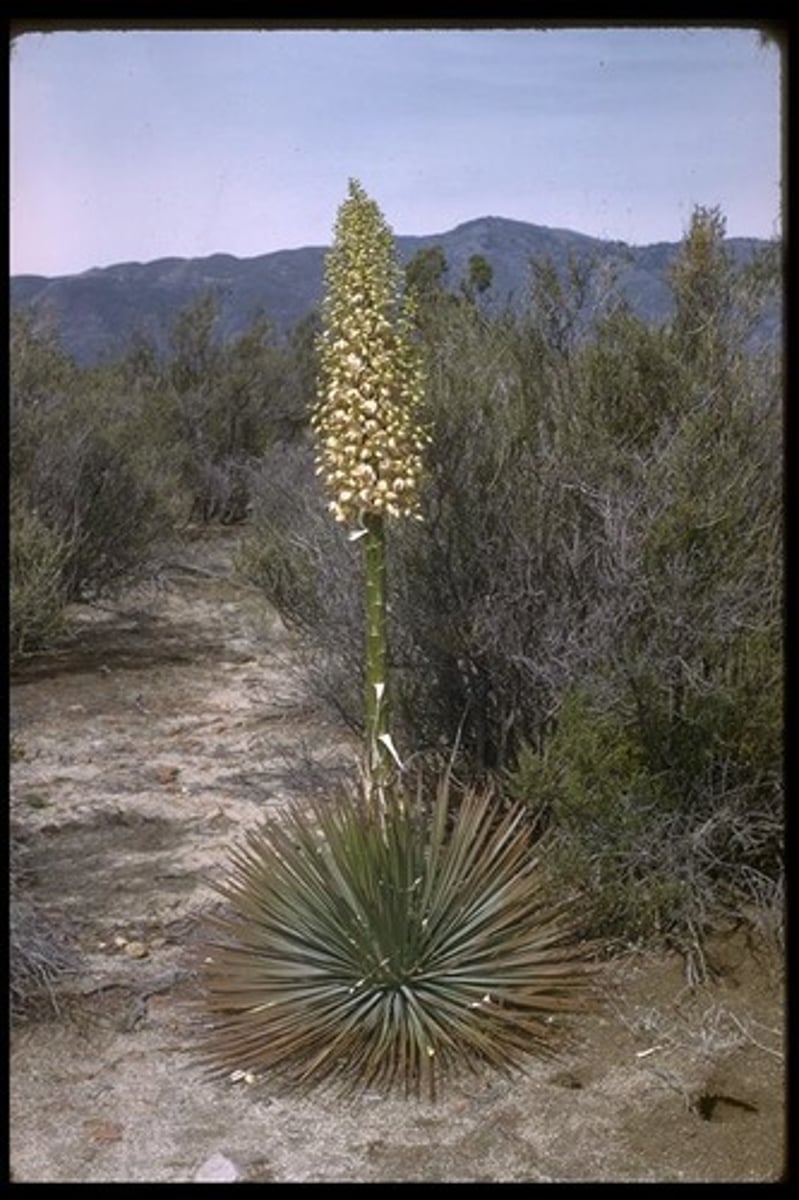
Mouse-gray dudleya
Dudleya abramsii (serpentine rock outcrop)
Leaves: Succulent, grayish-green rosette.
Flowers: Yellow to reddish blooms on stalks.
Ecology: Drought-tolerant, supports pollinators.
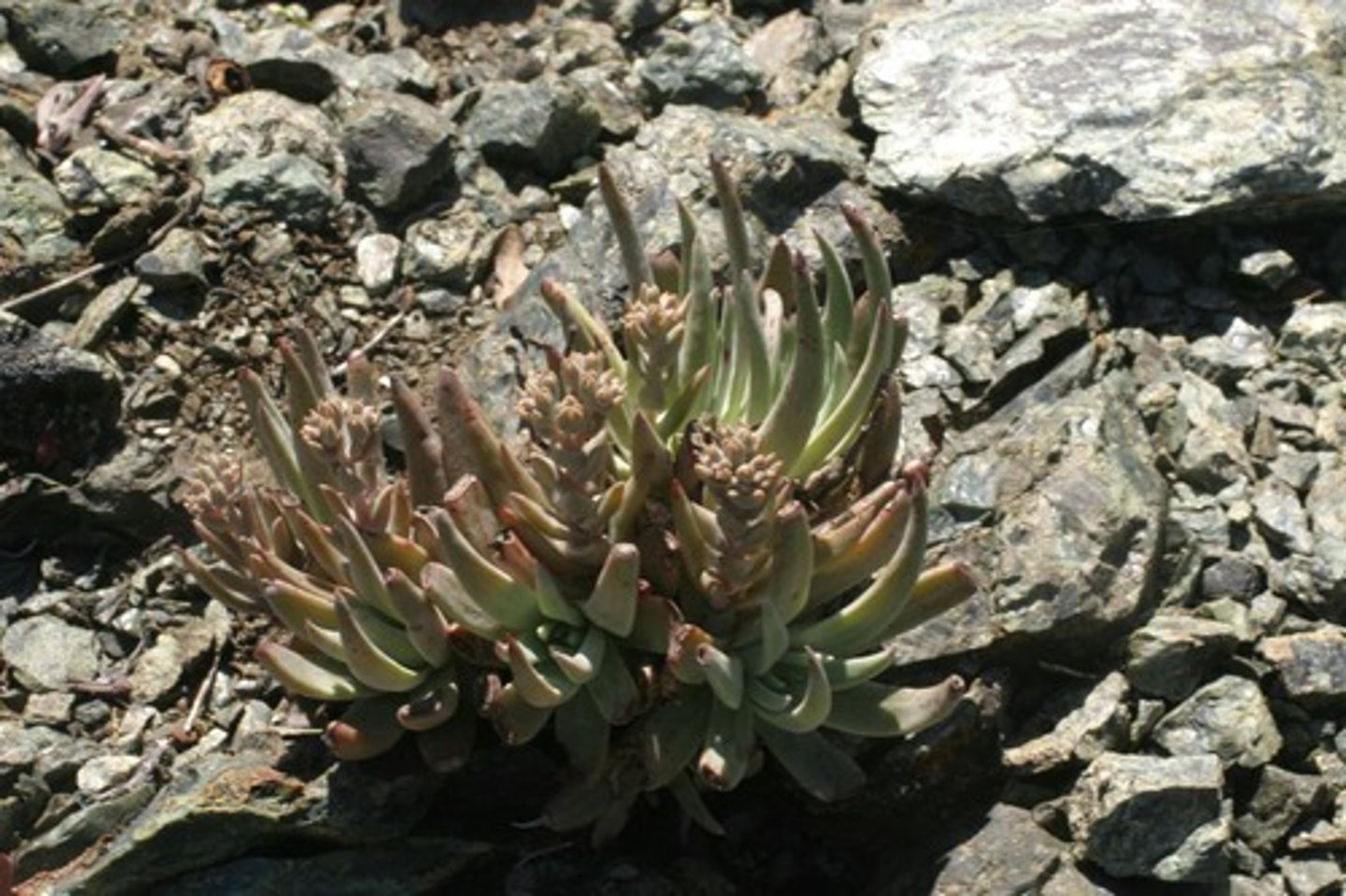
Buckbrush
Ceanothus cuneatus (maritime chaparral, chaparral)
Leaves: Small, opposite, leathery, with entire margins.
Flowers: Small, fragrant clusters, white to pale blue.
Ecology: Attracts bees and butterflies.
Ethnobotany: Used for soap (flowers) and tools (hard wood).
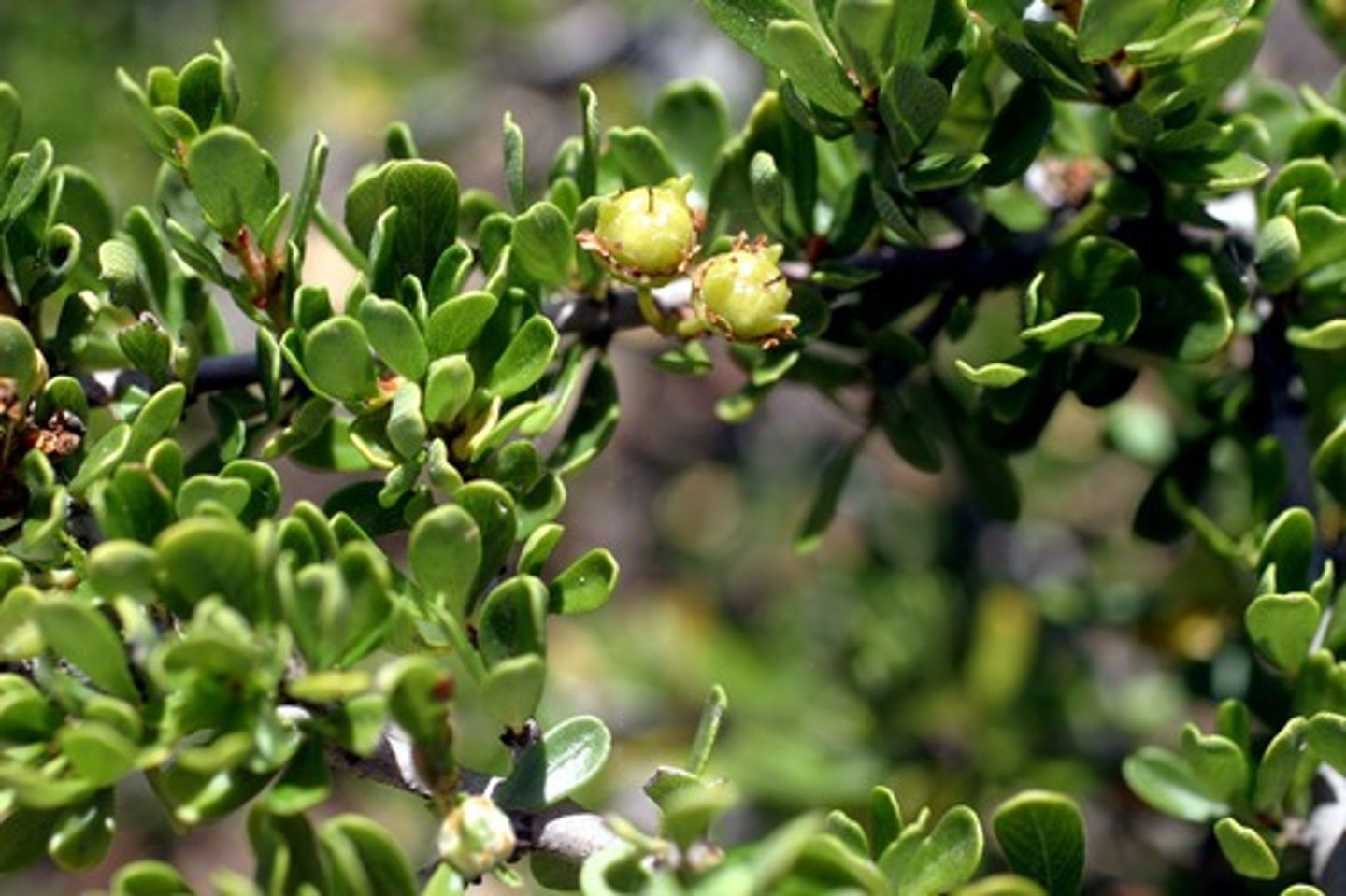
Mock heather
Ericameria ericoides (coastal dune scrub)
Leaves: Needle-like, alternate, resinous texture.
Flowers: Yellow daisy-like blooms.
Ecology: Sand stabilizer, attracts pollinators.
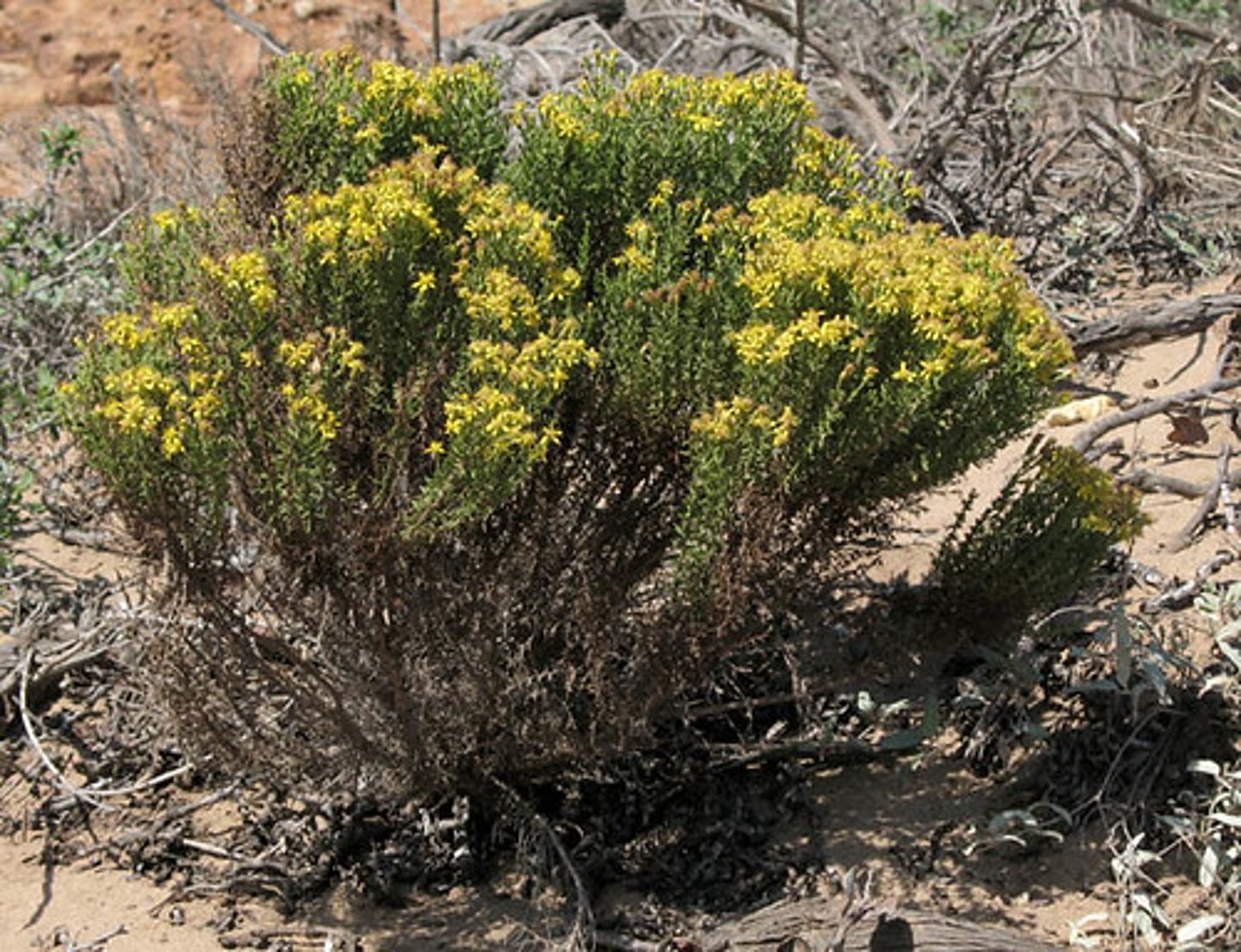
Silver dune lupine
Lupinus chamissonis (coastal dune scrub)
Leaves: Palmate, silvery with soft hairs.
Flowers: Purple to blue in dense spikes.
Ecology: Nitrogen fixer; larval host for butterflies.

Coastal buckwheat
Eriogonum parvifolium (coastal dune scrub)
Leaves: Small, oval, and hairy on undersides.
Flowers: Pink to white clusters that turn rust-colored with age.
Ecology: Vital for pollinators like bees and butterflies.
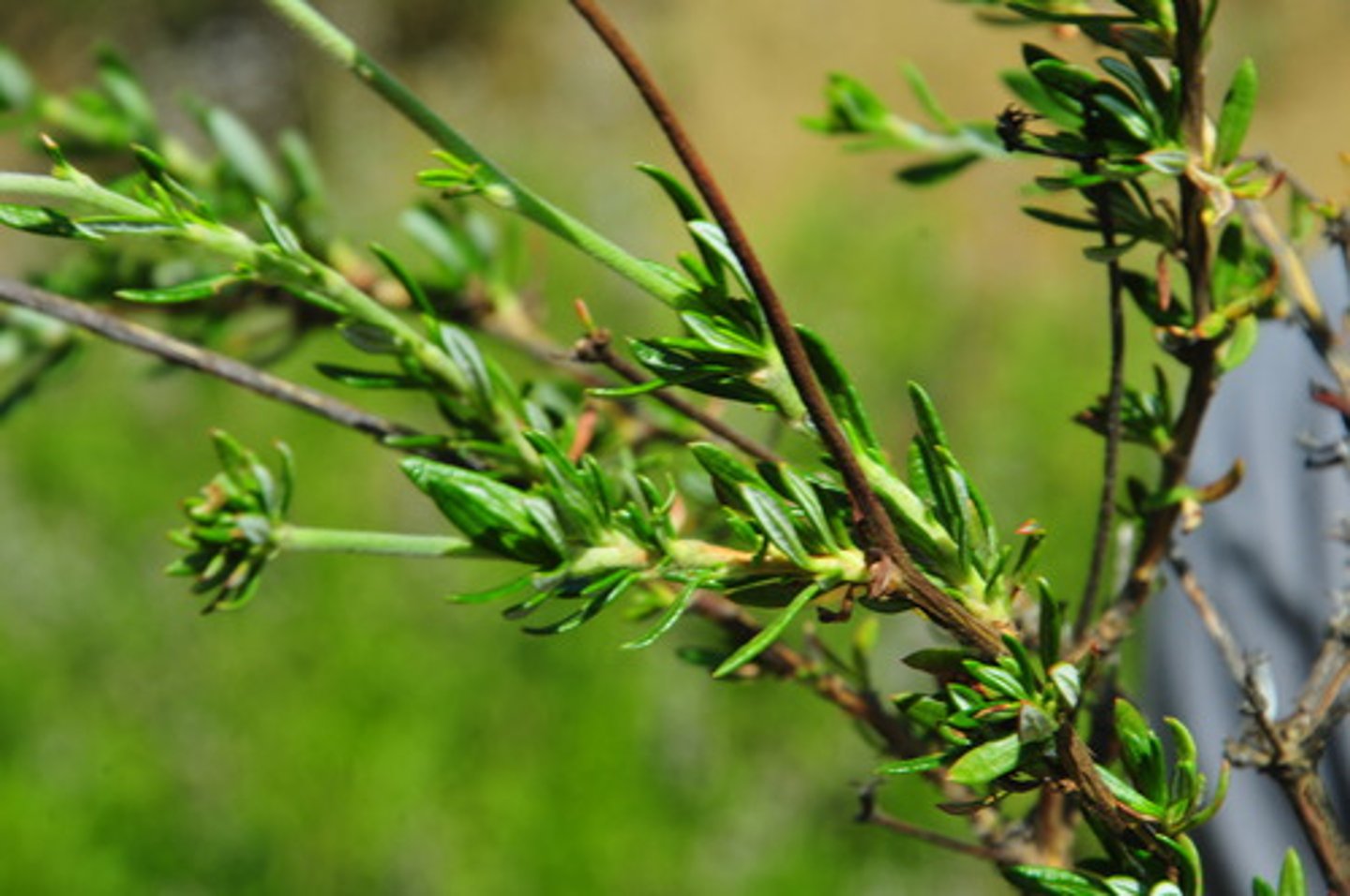
Wild cucumber
Marah fabacea (CDS, CS, riparian, woodlands)
Leaves: Palmate with lobes, tendrils for climbing.
Fruit: Spiky green gourds.
Ecology: Pollinated by insects; toxic seeds.
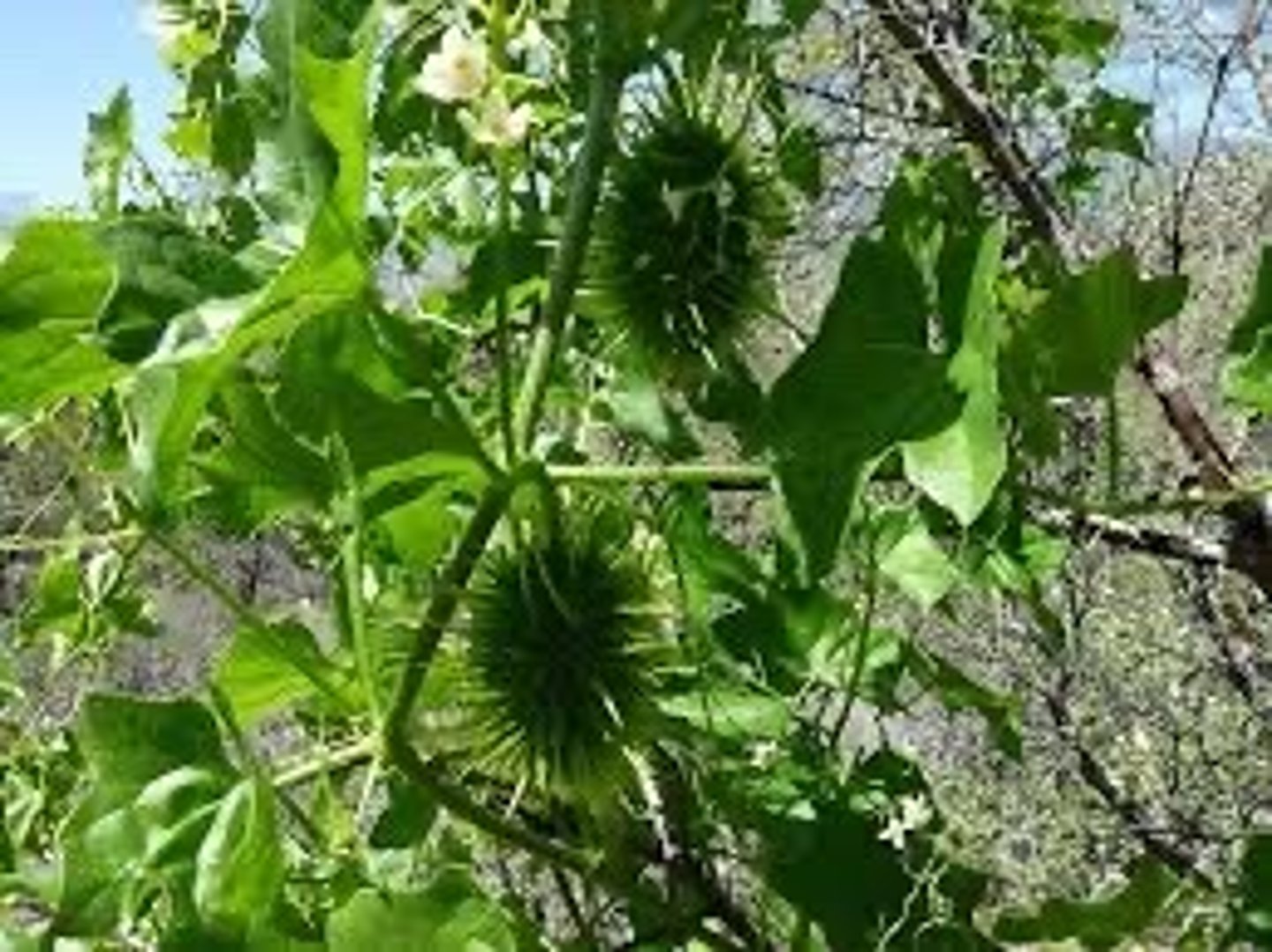
Fuchsia-flowered gooseberry
Ribes speciosum (CDS, CS, chaparral, woodlands)
Leaves: Lobed with toothed edges.
Flowers: Red, tubular, attracts hummingbirds.
Ecology: Spiny stems deter herbivores.
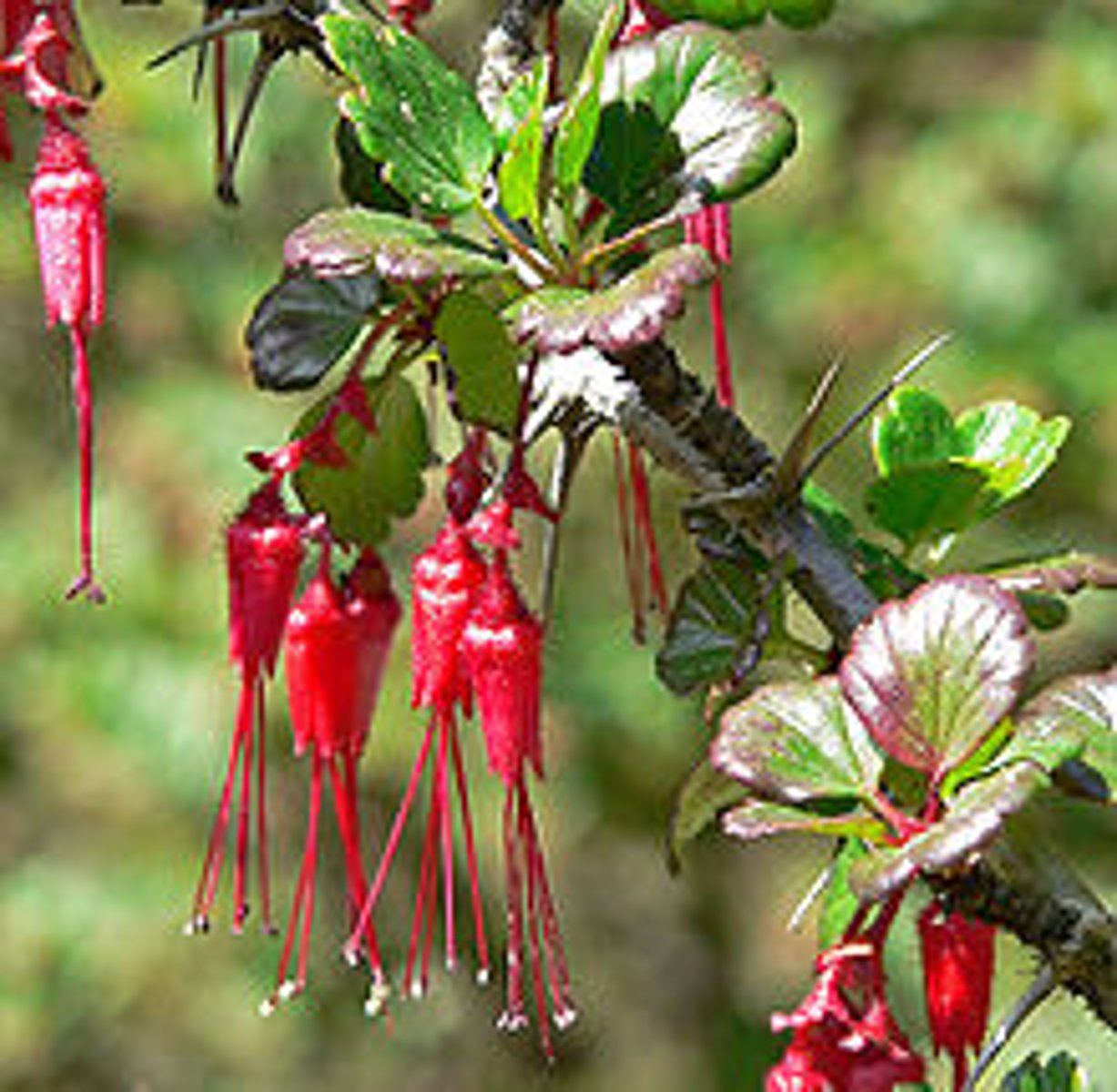
Morro manzanita
Arctostaphylos morroensis (maritime chaparral)
Leaves: Oval, dull green, alternate.
Bark: Smooth, reddish.
Flowers: White to pink urn-shaped clusters.
Ecology: Endemic to Morro Bay; drought-tolerant.
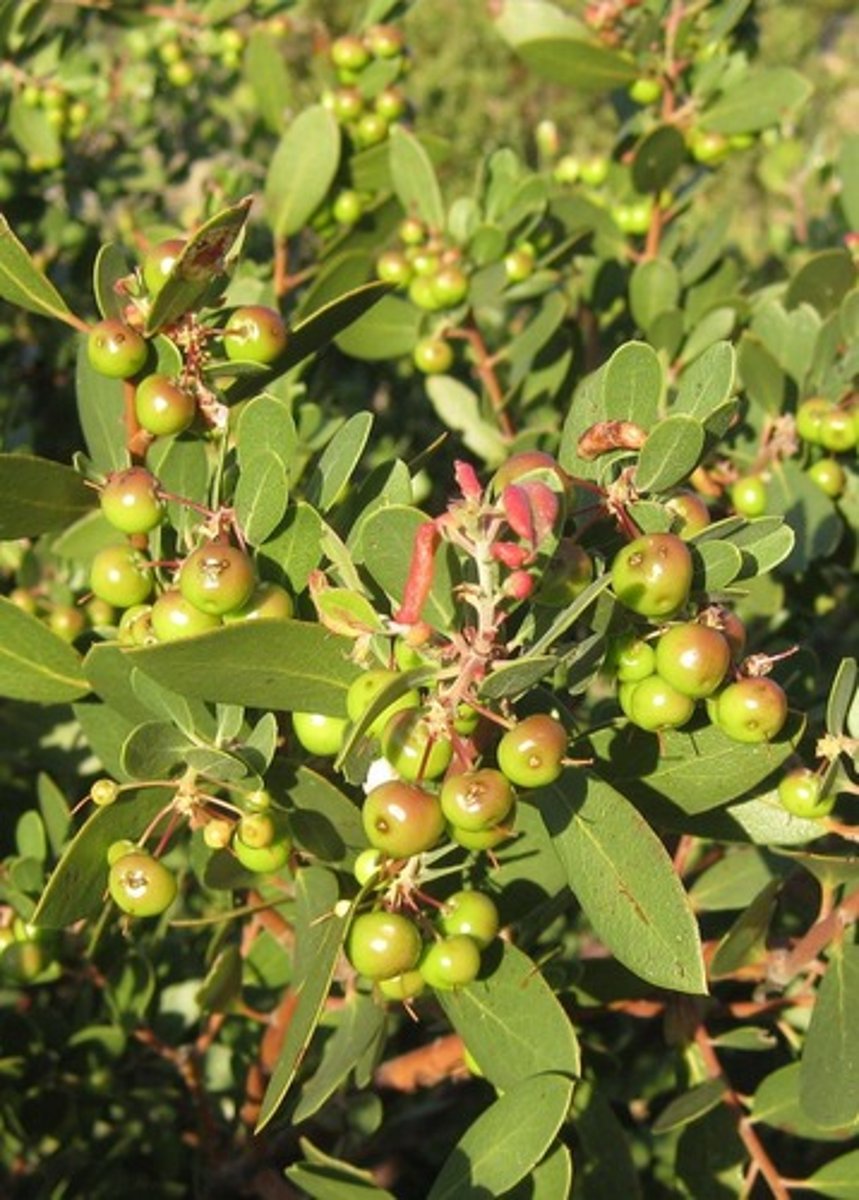
Lace lichen
Ramalina menziesii (epiphyte/pygmy oak woodland)
Appearance: Pale green, web-like fronds.
Ecology: Sensitive to air pollution; indicator species.
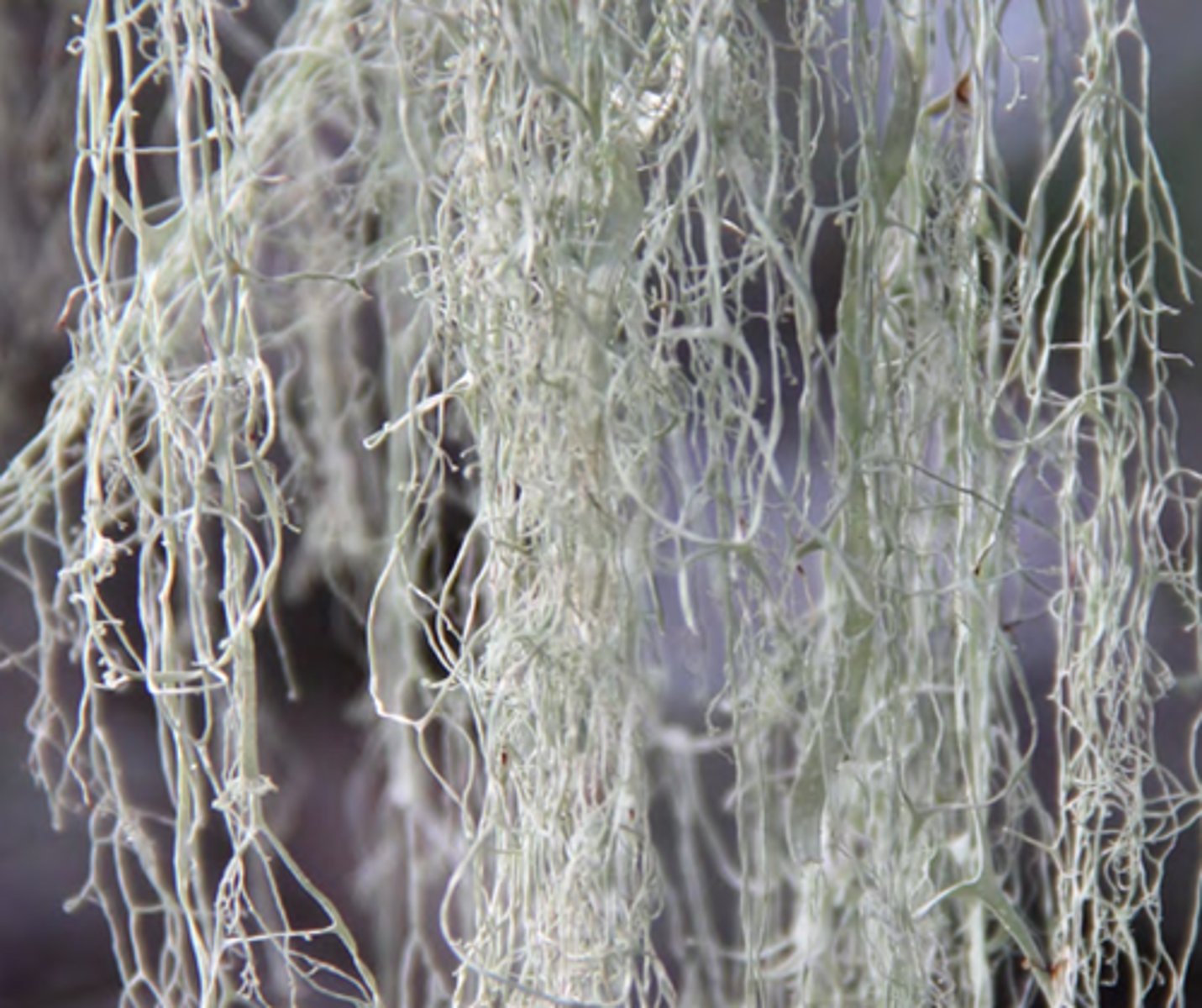
Chamise
Adenostoma fasciculatum (maritime chaparral, chaparral)
Leaves: Needle-like, resinous, clustered at nodes.
Flowers: Small, white in dense clusters.
Ecology: Fire-adapted with resprouting ability.

Sticky monkeyflower
Diplacus aurantiacus (coastal scrub)
Leaves: Opposite, sticky texture, oval.
Flowers: Tubular, orange; attracts hummingbirds.
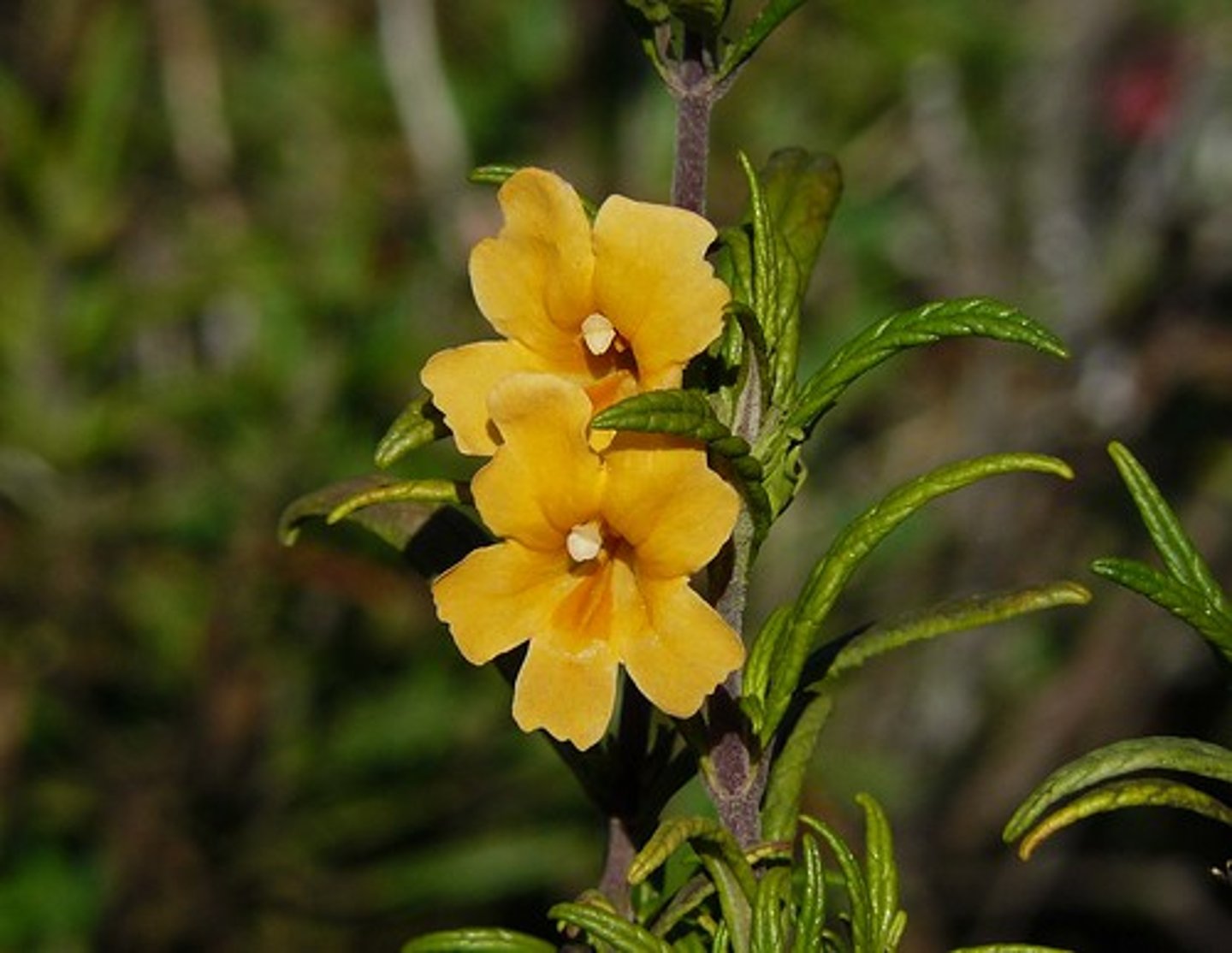
Toyon
Heteromeles arbutifolia (CS, chaparral, oak woodland)
Leaves: Serrated edges, leathery.
Flowers: White clusters; berries turn red in winter.
Ecology: Food source for birds and mammals.
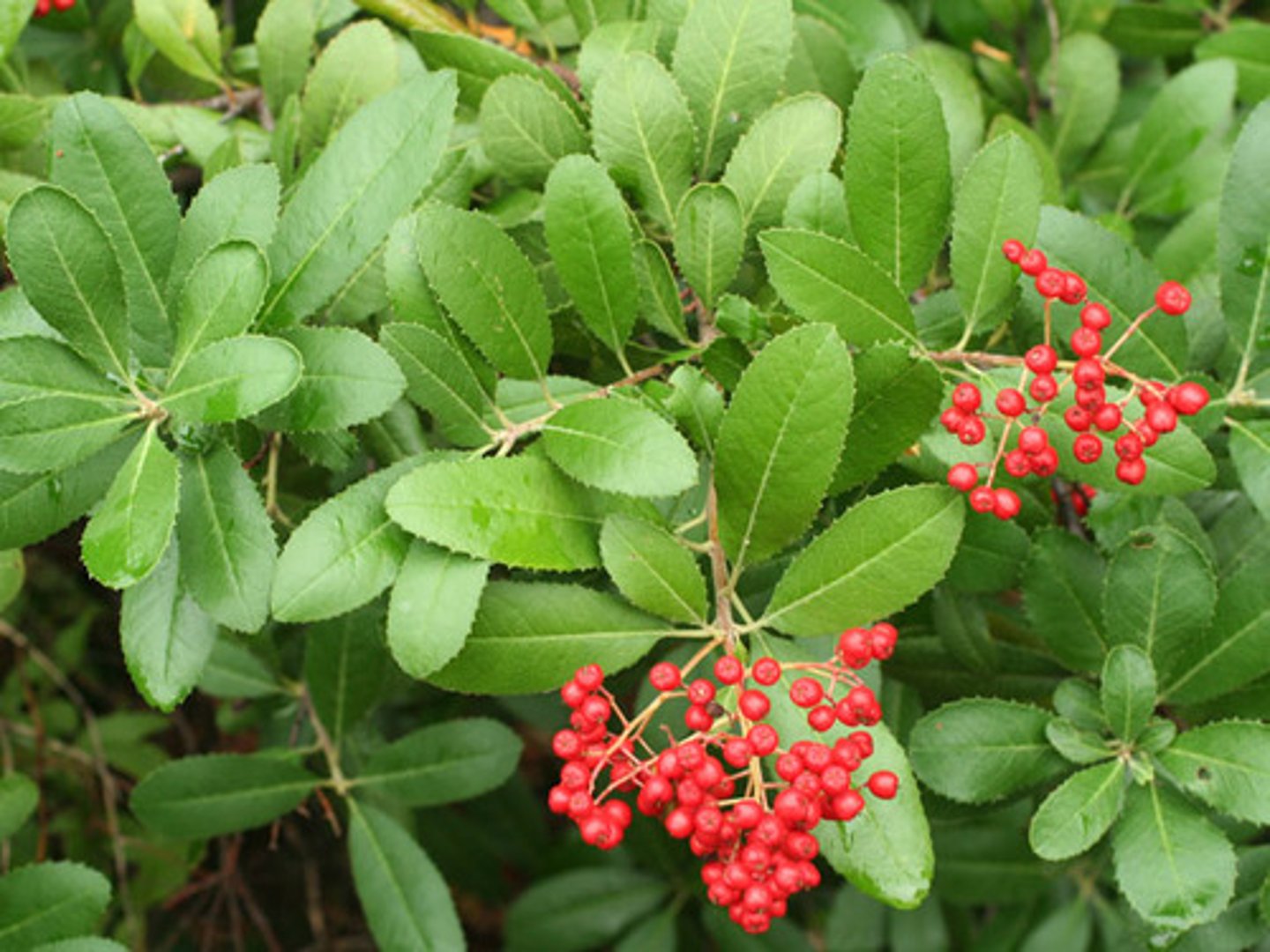
Redberry
Rhamnus crocea (oak woodland, chaparral)
Habitat: Oak woodland, chaparral.
Leaves: Small, alternate, shiny.
Fruit: Bright red berries.
Ecology: Attracts birds, drought-tolerant.
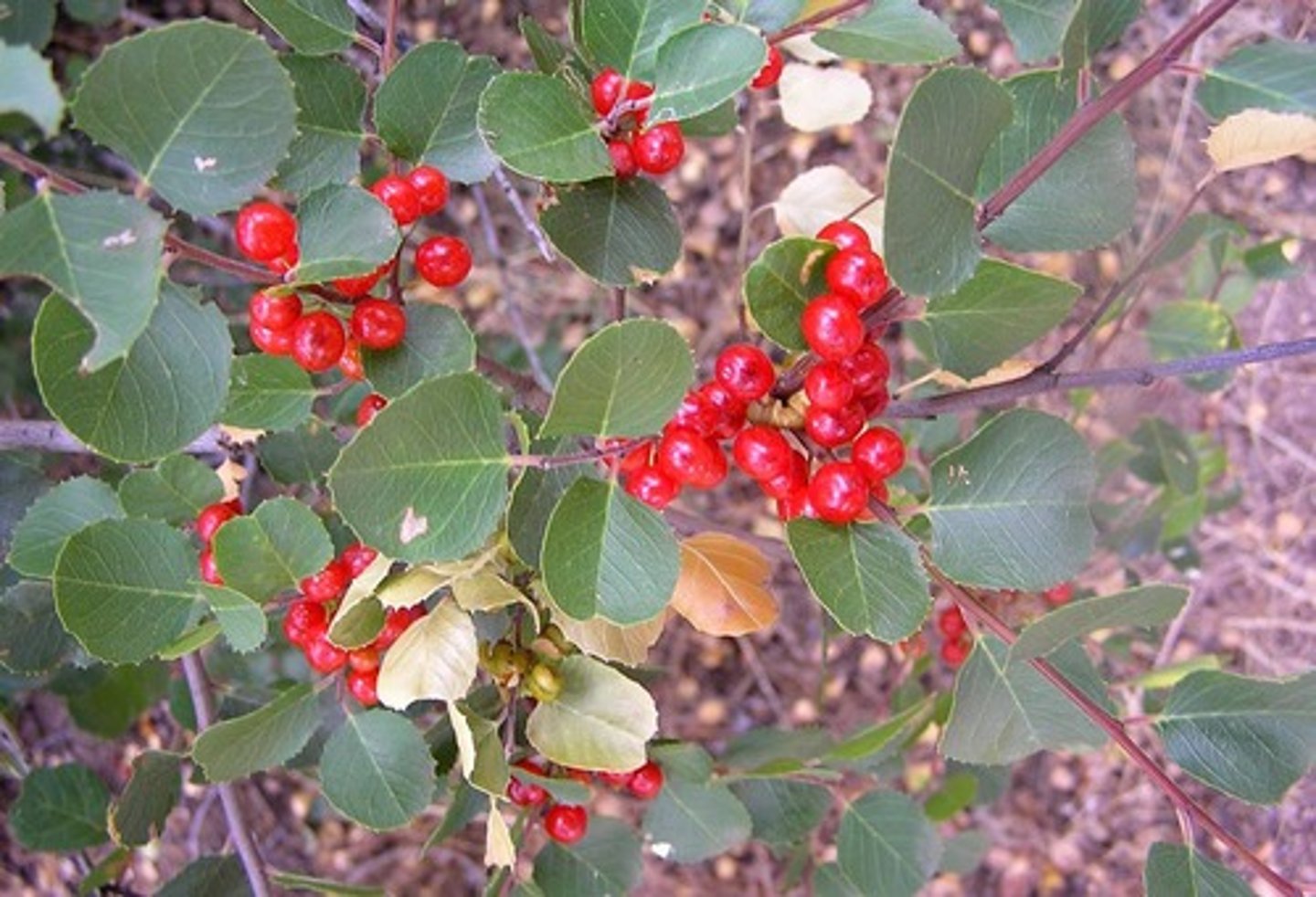
California buckwheat
Eriogonum fasciculatum (CS, chaparral)
Leaves: Small, narrow, clustered with rolled-under margins.
Flowers: White to pink clusters; darkens with age.
Ecology: Important nectar source.
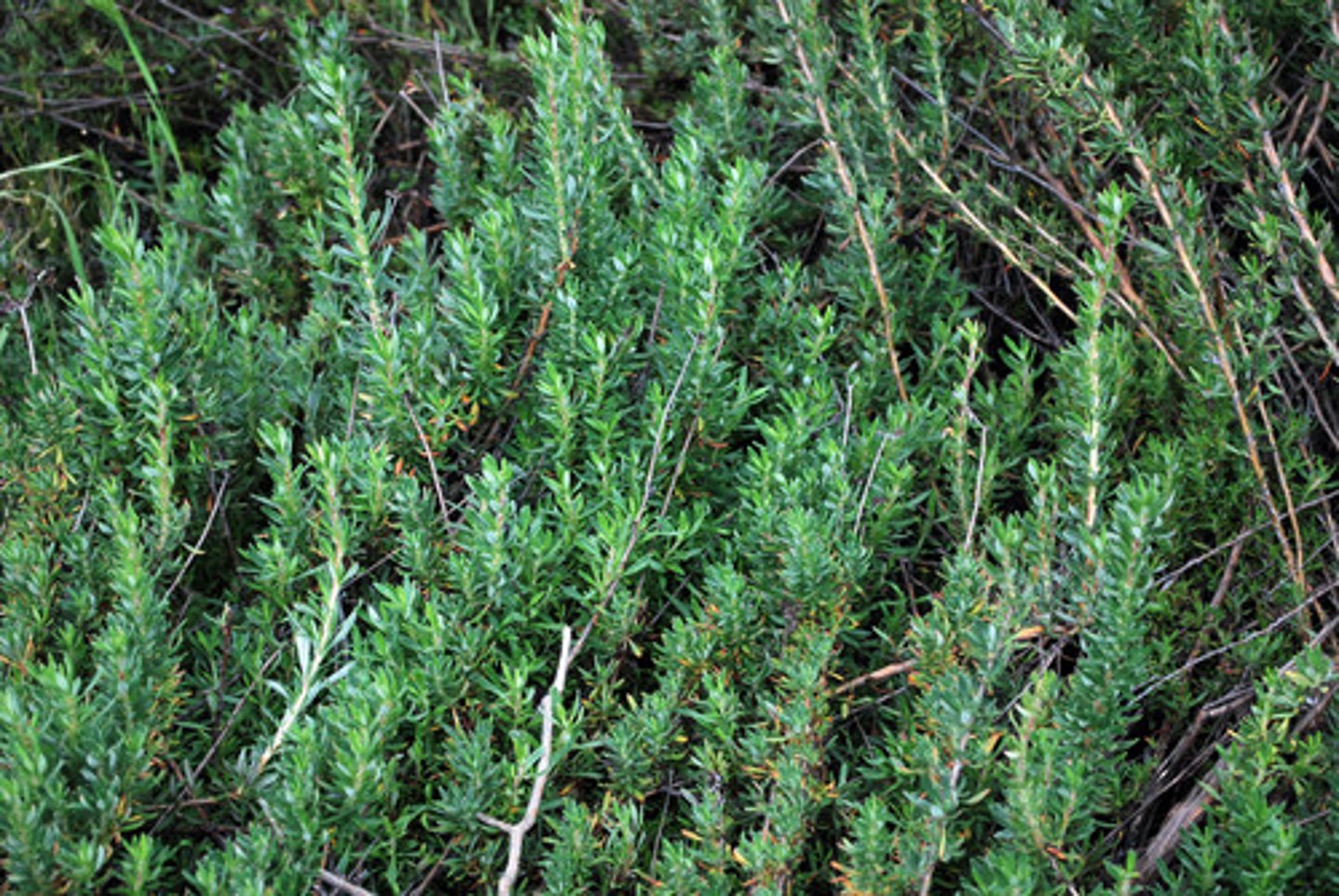
Goldback fern
Pentagramma triangularis (oak woodland, riparian)
Leaves: Triangular, delicate, green with black stems.
Ecology: Prefers shaded, moist habitats.

Maidenhair fern
Adiantum jordanii (oak woodland, riparian)
Leaves: Fan-shaped, bright green.
Ecology: Thrives in moist, shaded environments.

Mountain mahogany
Cercocarpus betuloides (chaparral)
Leaves: Oval, with serrated upper edges.
Fruit: Long, feathery tails.
Ecology: Adapted to dry conditions.
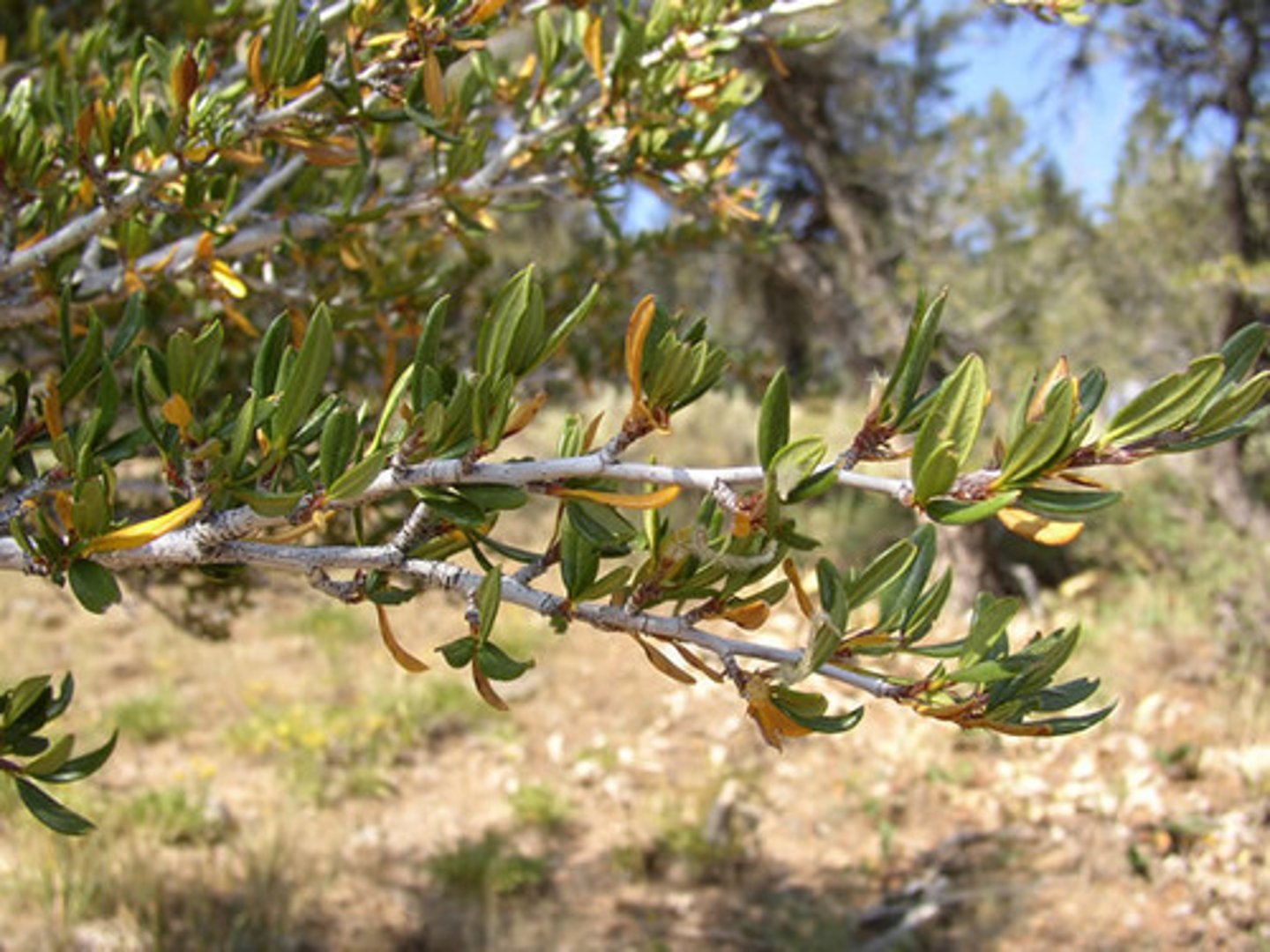
Hummingbird sage
Salvia spathacea (oak woodland)
Leaves: Large, hairy, aromatic.
Flowers: Pink to purple, tubular; attracts hummingbirds.
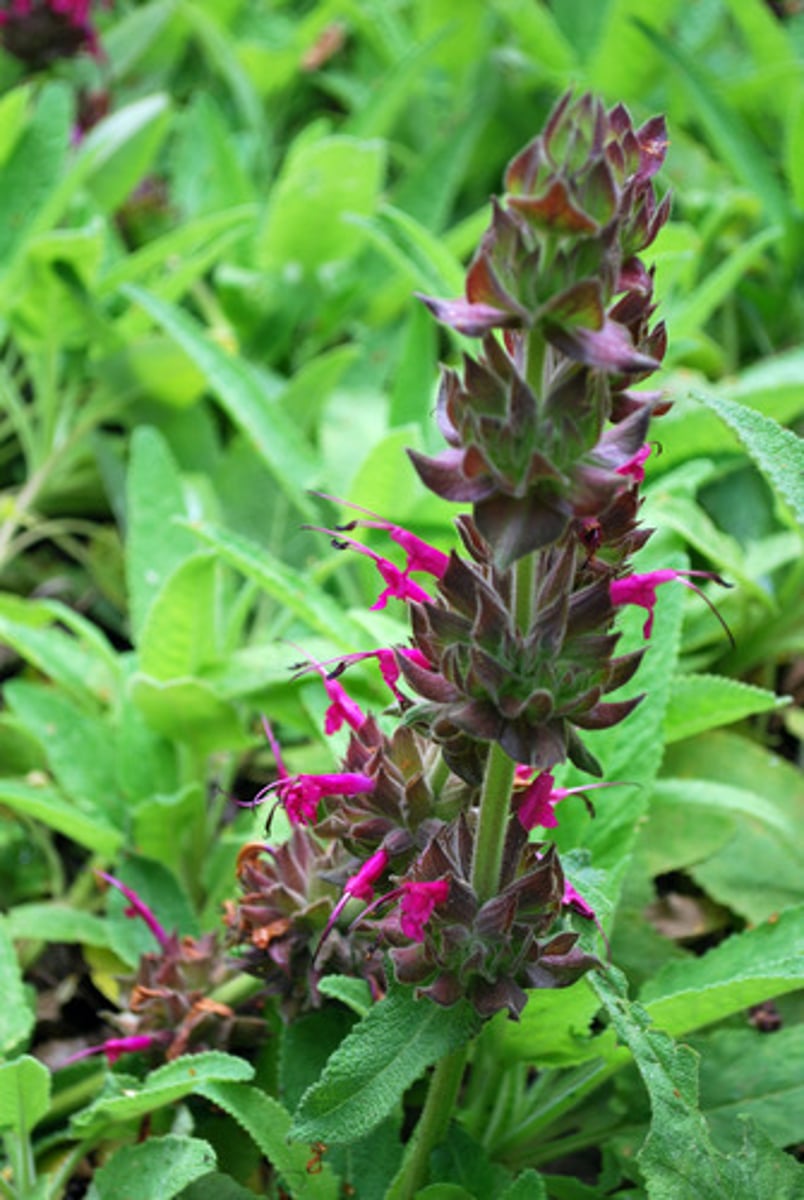
Mugwort
Artemisia douglasiana (riparian, CS, oak woodland)
Leaves: Lobed, aromatic, silvery underside.
Ecology: Repels insects; medicinal use by Native Americans.
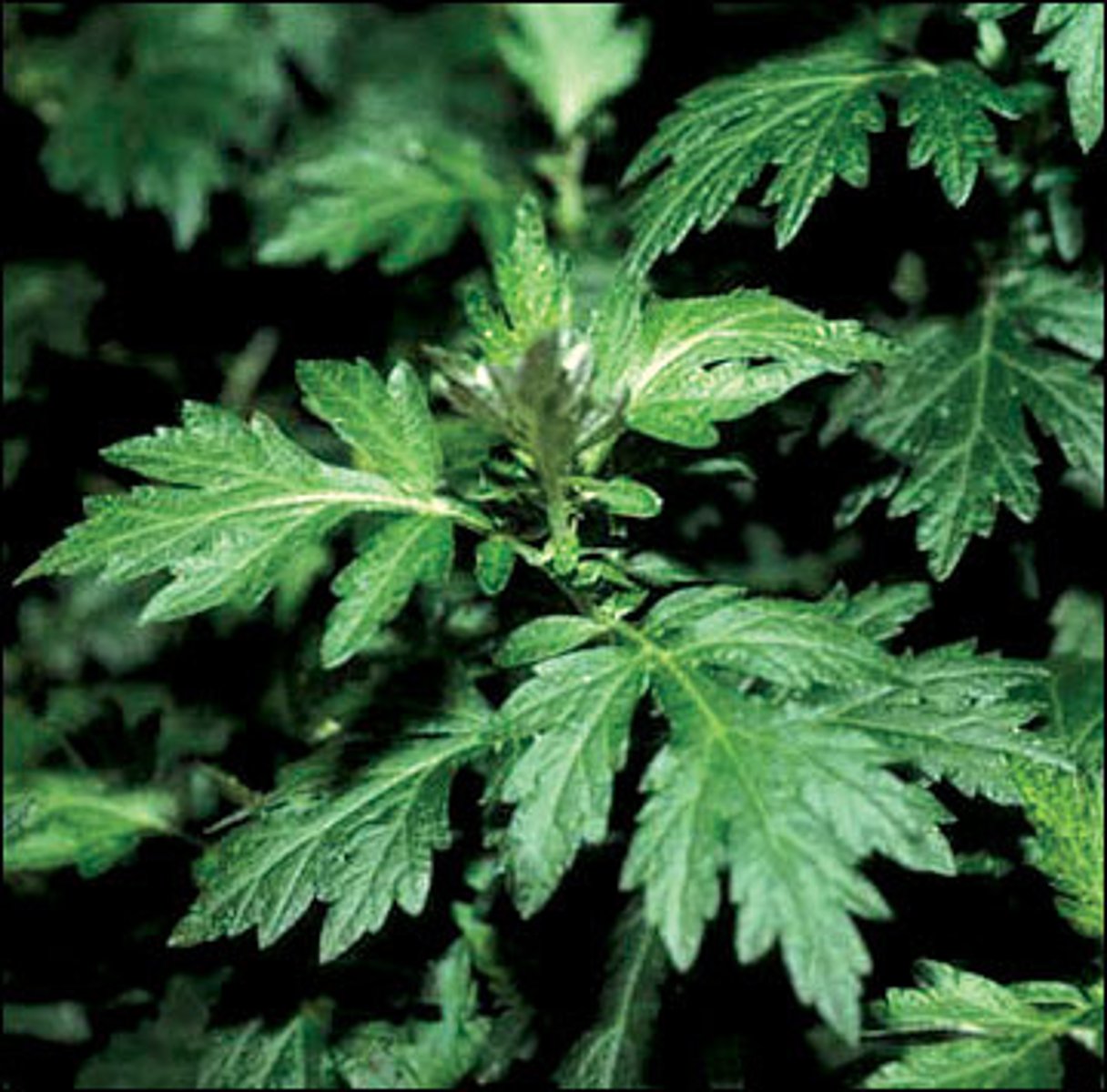
Deerweed
Acmispon glaber (CS)
Leaves: Small, trifoliate.
Flowers: Yellow turning orange with age.
Ecology: Nitrogen fixer, supports pollinators.
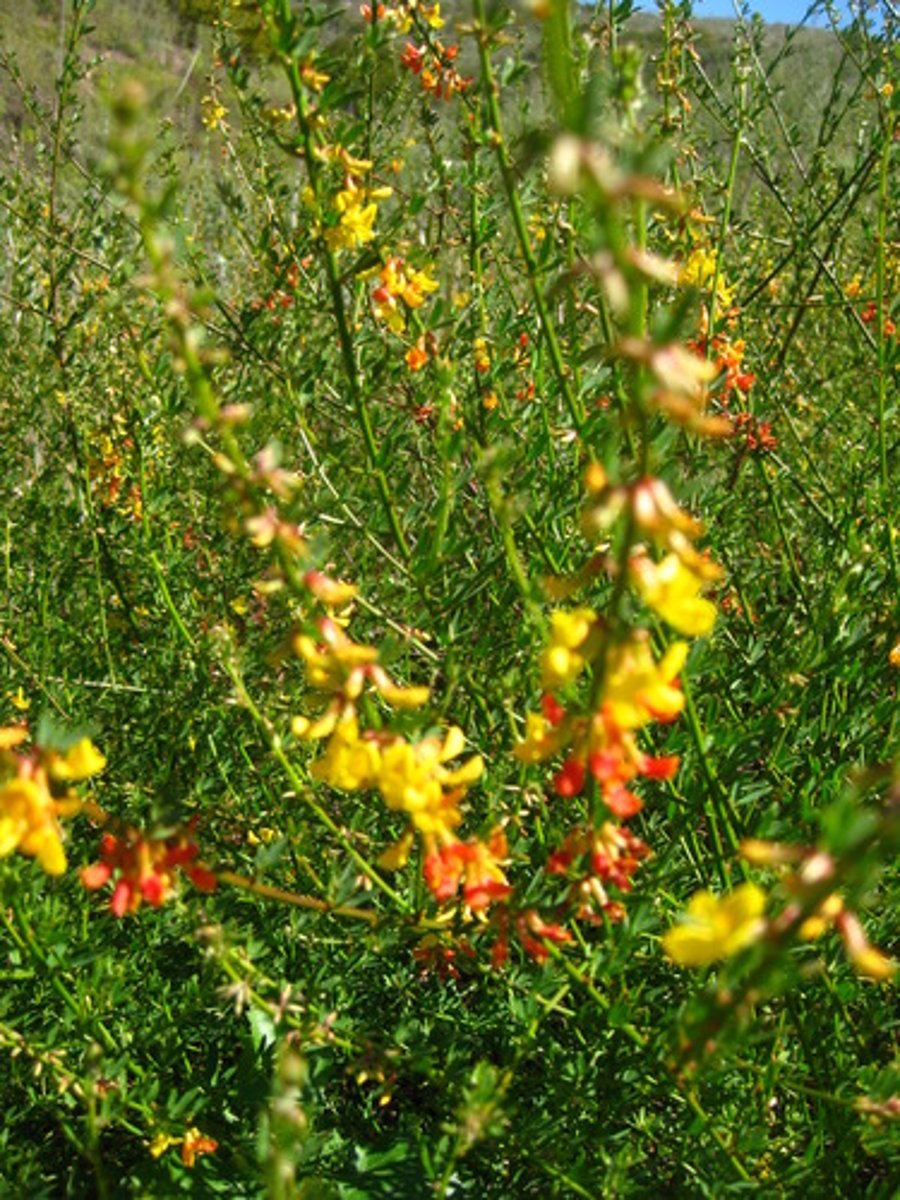
Chaparral pea
Pickeringia montana (chaparral)
Leaves: Evergreen, small, paired leaflets.
Flowers: Pink pea-shaped blooms.
Ecology: Thorny, nitrogen fixer.
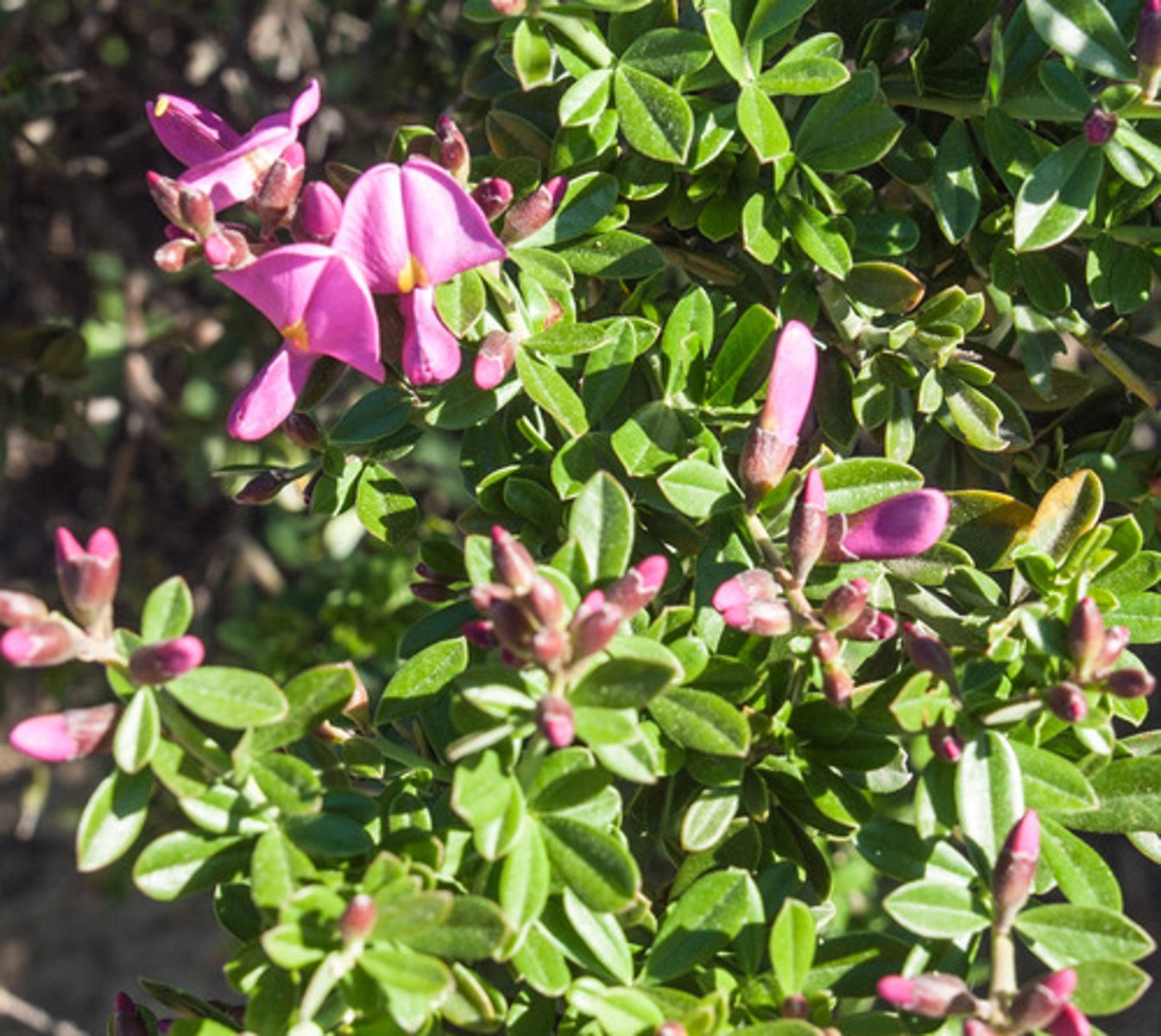
Leather oak
Quercus durata (chaparral)
Leaves: Small, leathery, curled edges.
Ecology: Adapts to nutrient-poor soils.
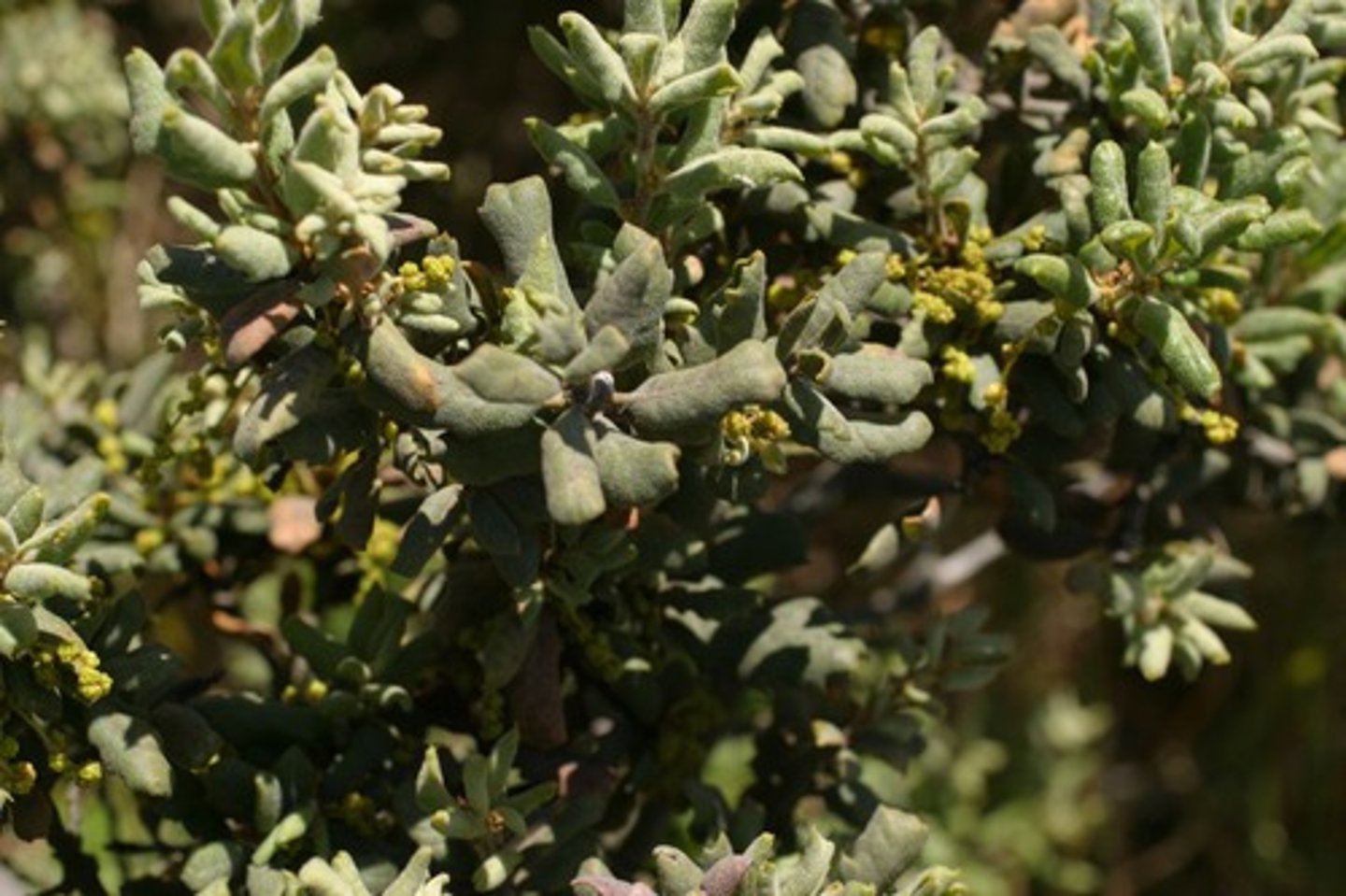
Purple needle grass
Stipa pulchra (grassland, serpentine rock outcrop)
Leaves: Narrow, pointed.
Ecology: California state grass; drought-tolerant.
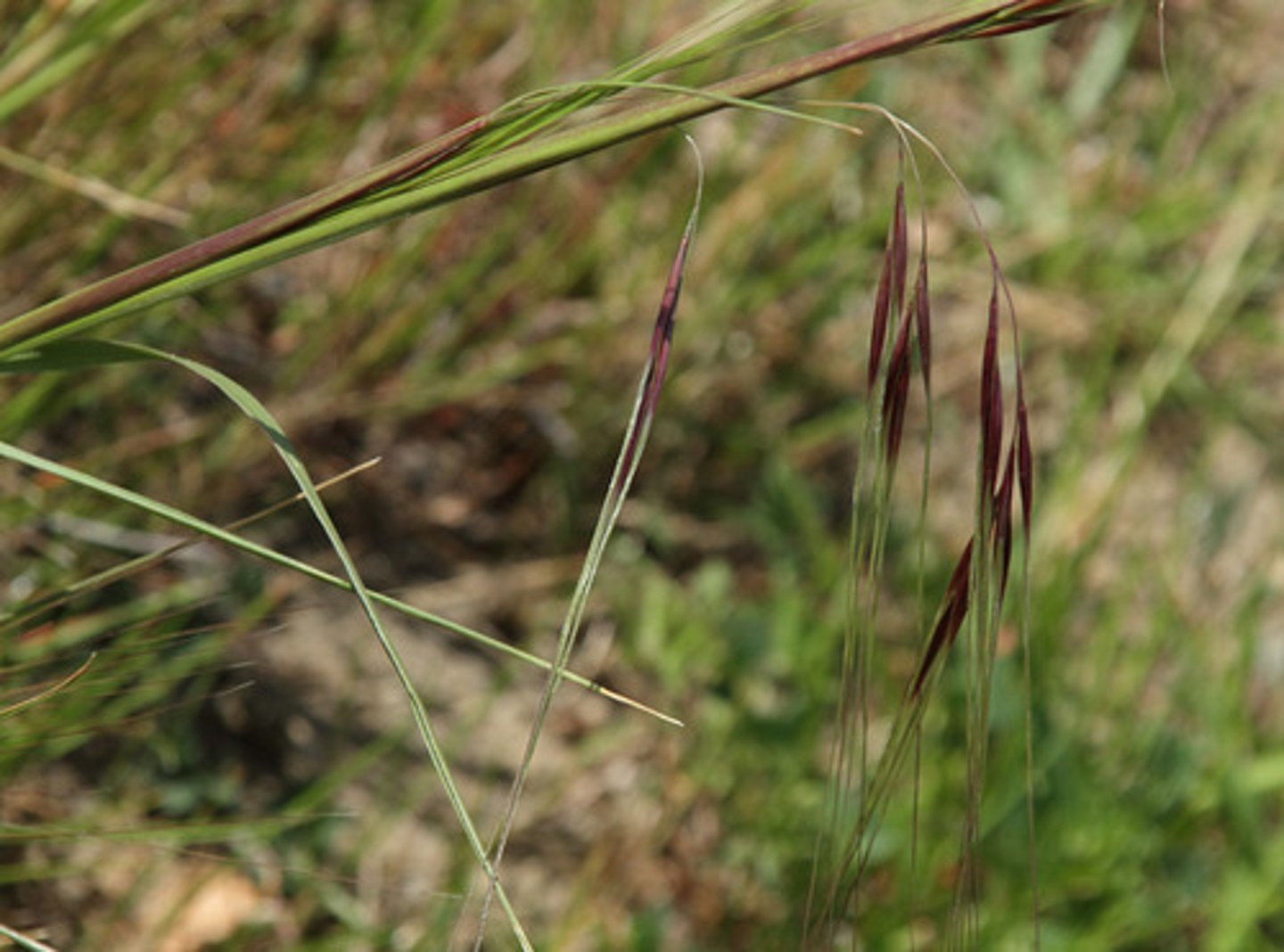
Wild oats
Avena spp. (grassland, anthropogenic) [Non-native]
Leaves: Flat, grass-like blades.
Flowers: Spikelets with awns.
![<p>Avena spp. (grassland, anthropogenic) [Non-native]</p><p>Leaves: Flat, grass-like blades.</p><p>Flowers: Spikelets with awns.</p>](https://knowt-user-attachments.s3.amazonaws.com/9a66d2f1-0072-4607-8812-20f79bc99356.jpg)
Coast morning glory
Calystegia macrostegia (coastal scrub)
Leaves: Heart-shaped.
Flowers: Funnel-shaped, white to pink.
Ecology: Vine with climbing habit.
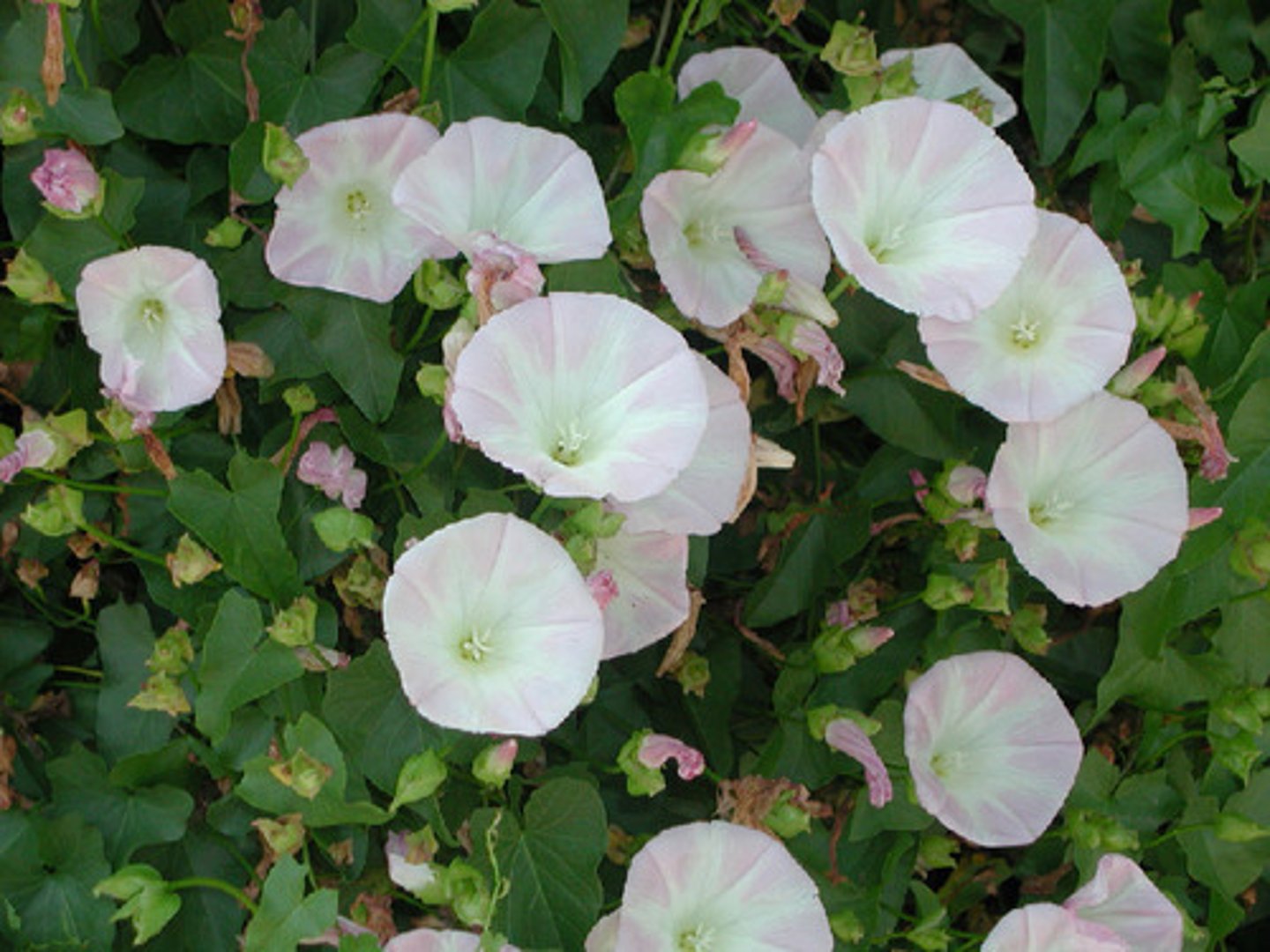
California poppy
Eschscholzia californica (grassland)
Leaves: Finely divided, gray-green.
Flowers: Bright orange, cup-shaped.
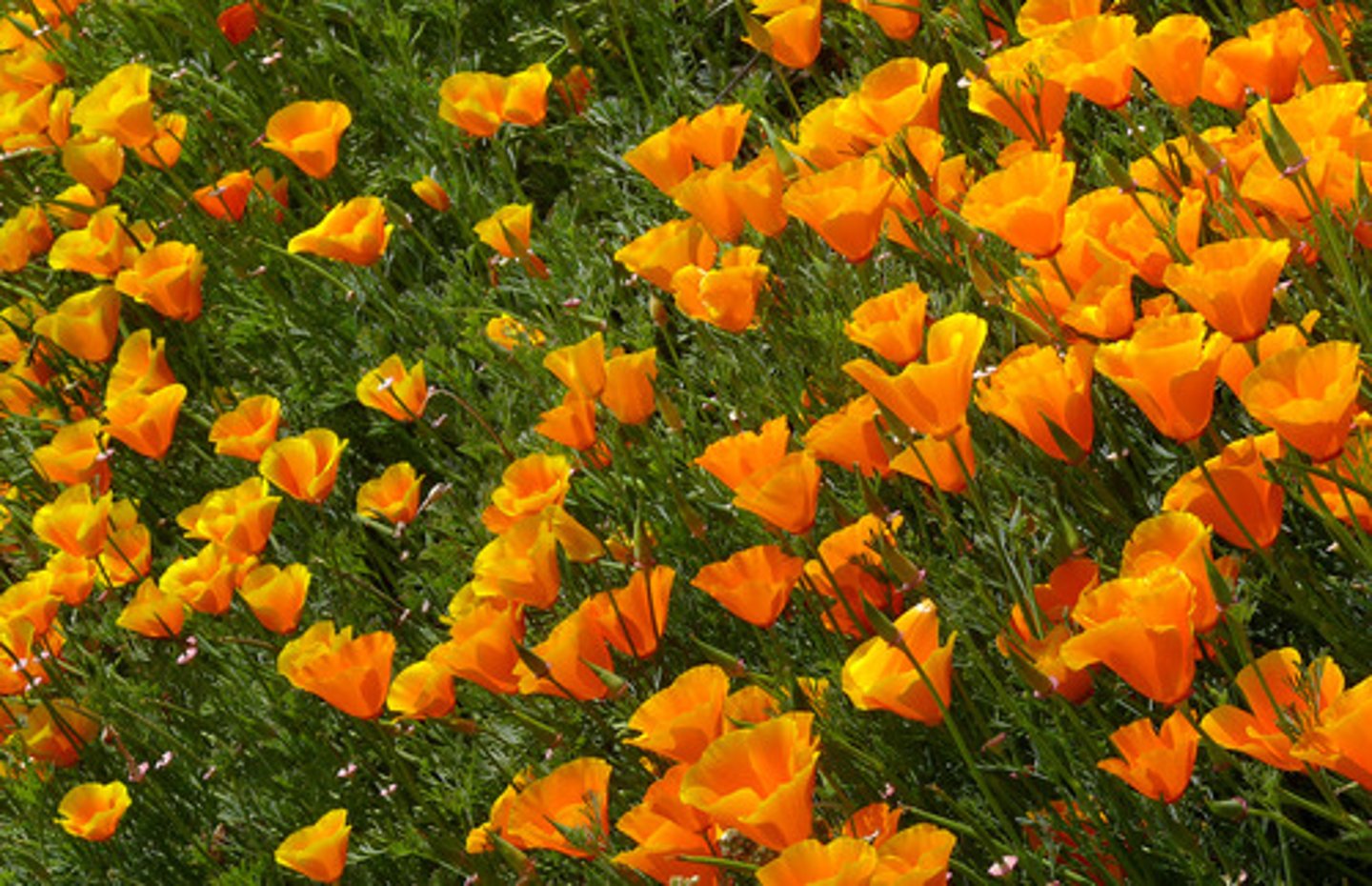
Morro milkvetch, loco weed
Astragalus curtipes (coastal scrub)
Leaves: Pinnate, hairy.
Flowers: Small, pale purple.
Ecology: Adapted to serpentine soils.
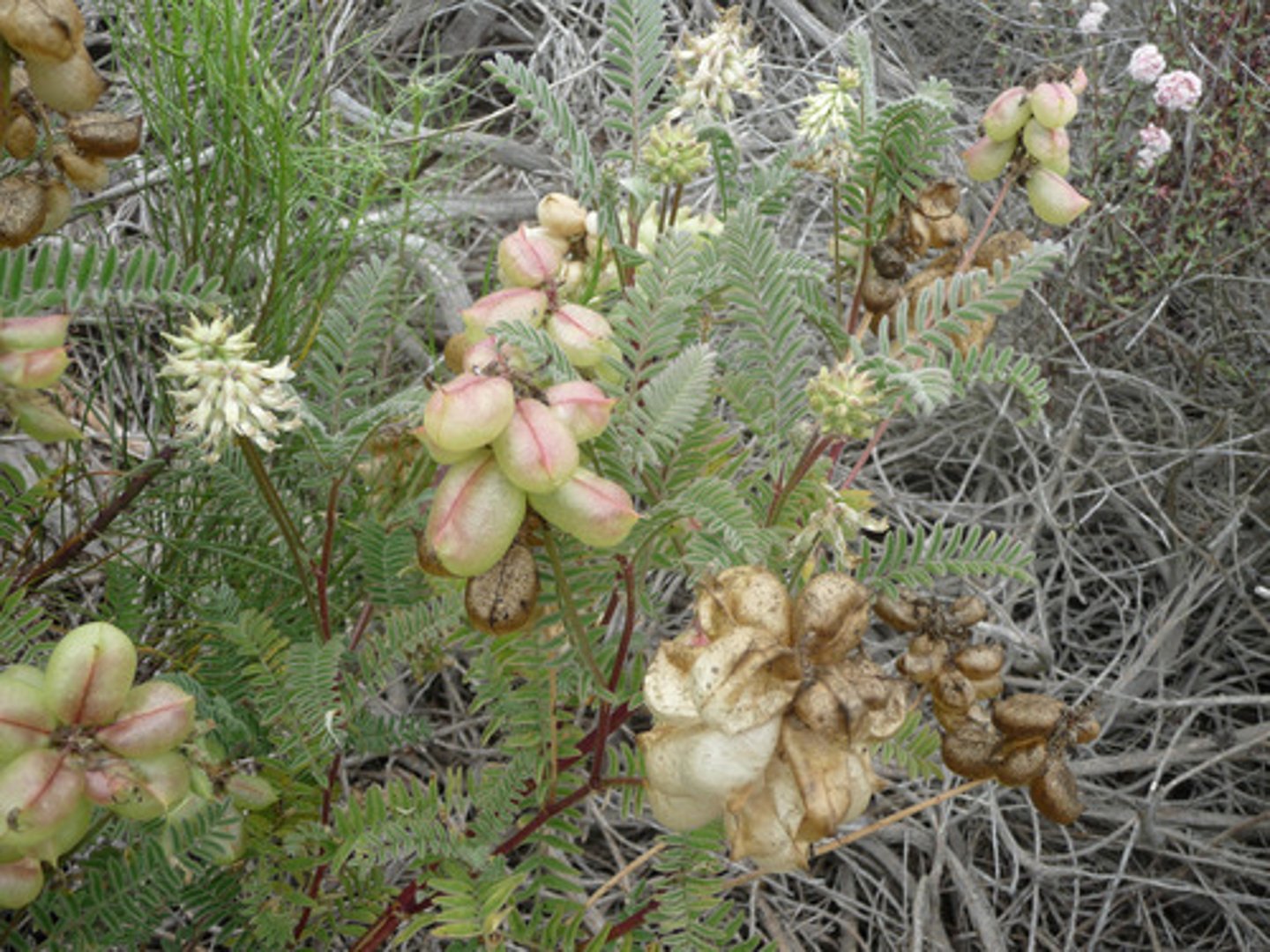
Coastal Scrub (CS)
- Low, aromatic, drought-deciduous shrubs
- Soft leaves compared to chaparral
- Open canopy, allowing grasses and forbs
- Found in coastal lowlands with Mediterranean climate
- Adapted to summer drought
Coastal Scrub plants
Calystegia macrostegia, Diplacus aurantiacus, Artemisia californica, Salvia mellifera, Baccharis pilularis, Eriogonum fasciculatum, Acmispon glaber, Ericameria ericoides, Lupinus chamissonis, Eriogonum parvifolium
Chaparral
- Dense, evergreen shrubland
- Sclerophyllous (hard, leathery) leaves
- Drought-adapted- Found on steep, rocky slopes
- Fire-adapted, with infrequent but intense fires
- High biodiversity, especially endemics
Chaparral plants
Pickeringia montana, Quercus durata, Cercocarpus betuloides, Ceanothus cuneatus, Adenostoma fasciculatum, Arctostaphylos morroensis, Hesperoyucca whipplei
Grassland
- Dominated by perennial and annual grasses
- Forbs interspersed
- Occurs on deep soils, often in valleys or rolling hills
- Highly impacted by agriculture and invasion by non-natives
Grassland plants
Stipa pulchra, Avena spp. (non-native), Eschscholzia californica
Serpentine Rock Outcrop
- Specialized for nutrient
-poor, rocky soils high in magnesium and heavy metals
- High endemism
- Sparse vegetation, often with unique flora
Serpentine Rock Outcrop plants
Stipa pulchra, Hesperoyucca whipplei, Dudleya abramsii
Oak Woodland
- Dominated by oaks (Quercus spp.)
- Multi-layered structure: canopy, midstory, understory
- Understory includes shrubs, ferns, and herbaceous plants
- Occurs in valleys and foothills
Oak Woodland plants
Heteromeles arbutifolia, Rhamnus crocea, Pentagramma triangularis, Adiantum jordanii, Salvia spathacea, Quercus agrifolia, Umbellularia californica
Riparian
- Found along streams and rivers
- Lush, water-loving vegetation
- Includes trees (sycamore, willow), shrubs, and ferns
- High biodiversity, corridors for wildlife
Riparian plants
Platanus racemosa, Salix lasiolepis, Pentagramma triangularis, Adiantum jordanii, Umbellularia californica
Coastal Dune Scrub
- Low-growing shrubs and subshrubs
- Adapted to sandy, shifting soils and salt spray
- Often found near the coast
- Includes many endemic species
Coastal Dune Scrub plants
Ericameria ericoides, Lupinus chamissonis, Eriogonum parvifolium, Marah fabacea, Ribes speciosum
Maritime Chaparral
- Subtype of chaparral- Restricted to coastal areas with fog influence
- High endemism, often with rare species
Maritime Chaparral plants
Ceanothus cuneatus, Arctostaphylos morroensis, Adenostoma fasciculatum
Anthropogenic/Disturbed
- Dominated by non-native annual grasses and weeds
- Result of human disturbance (agriculture, grazing, development)
Anthropogenic/Disturbed plant
Avena spp. (wild oats)
Non-native
Pygmy Oak Woodland
- Elfin Forest
- Dominated by non-native annual grasses and weeds
- Result of human disturbance (agriculture, grazing, development)
Pygmy Oak Woodland plant
Ramalina menziesii (epiphyte)
Chaparral info
Traits: Dense, evergreen shrubs; sclerophyllous (hard, leathery) leaves; adapted to drought, poor soils, and periodic fire.
Plant Adaptations: Deep roots, fire-stimulated germination, thick bark, small leaves to reduce water loss.
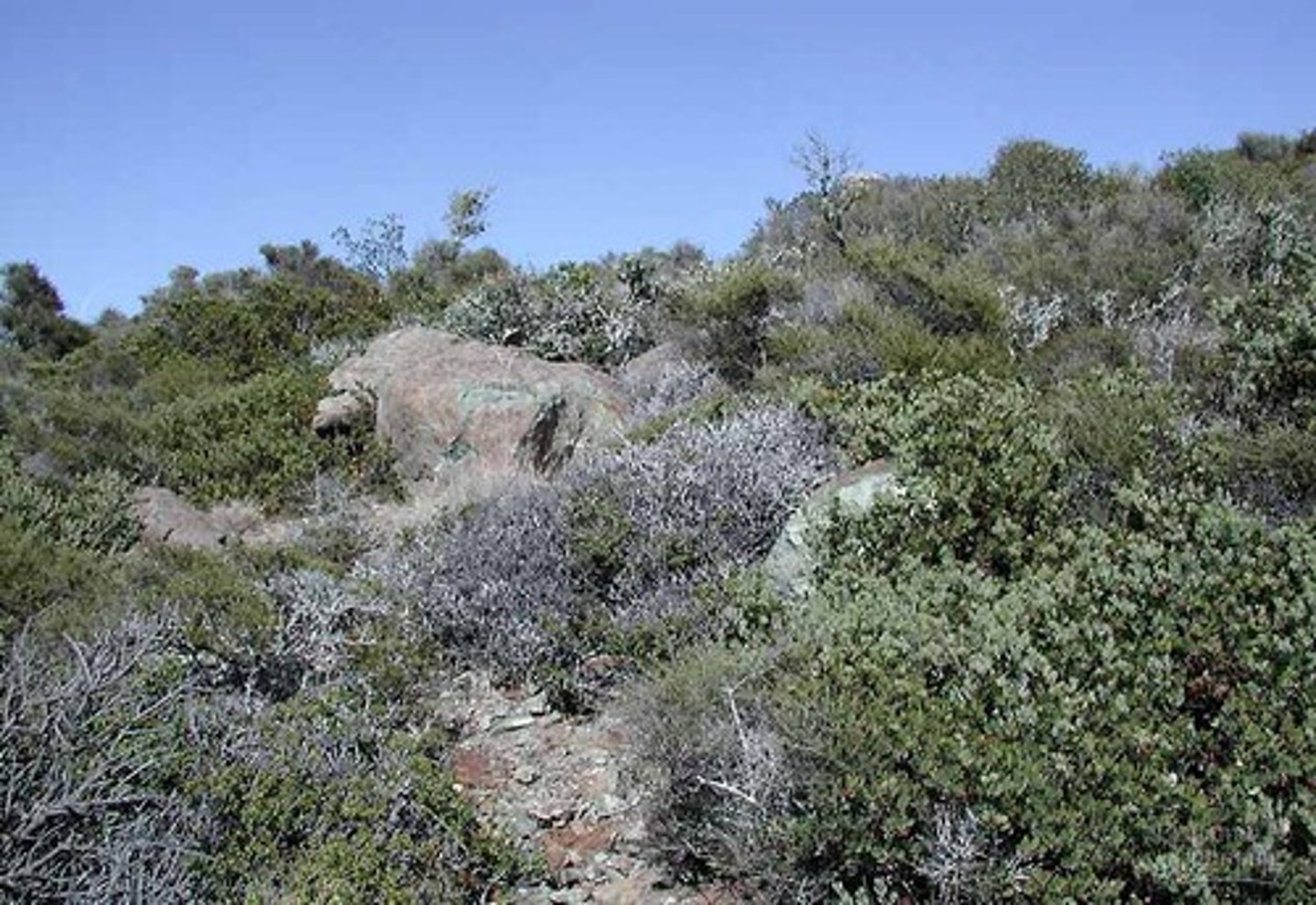
Coastal Scrub info
Traits: Low, soft-leaved, drought-deciduous shrubs; open canopy; adapted to fog, wind, and summer drought.
Plant Adaptations: Aromatic leaves, quick resprouting after disturbance, shallow roots for fog moisture.
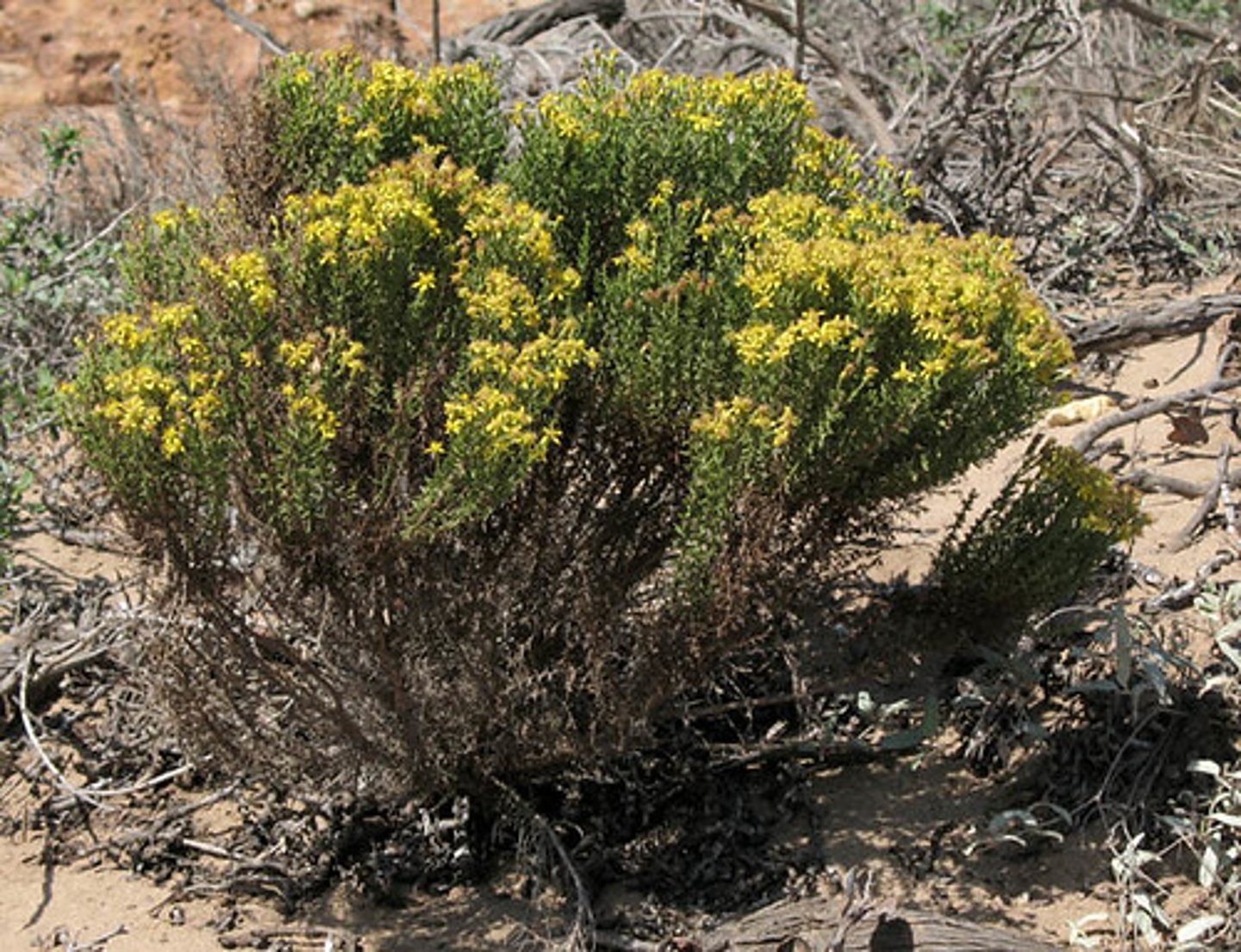
Grassland info
Traits: Dominated by annual and perennial grasses, many forbs; deep, fertile soils; subject to grazing and disturbance.
Plant Adaptations: Rapid growth after rain, annual life cycles, wind-dispersed seeds.
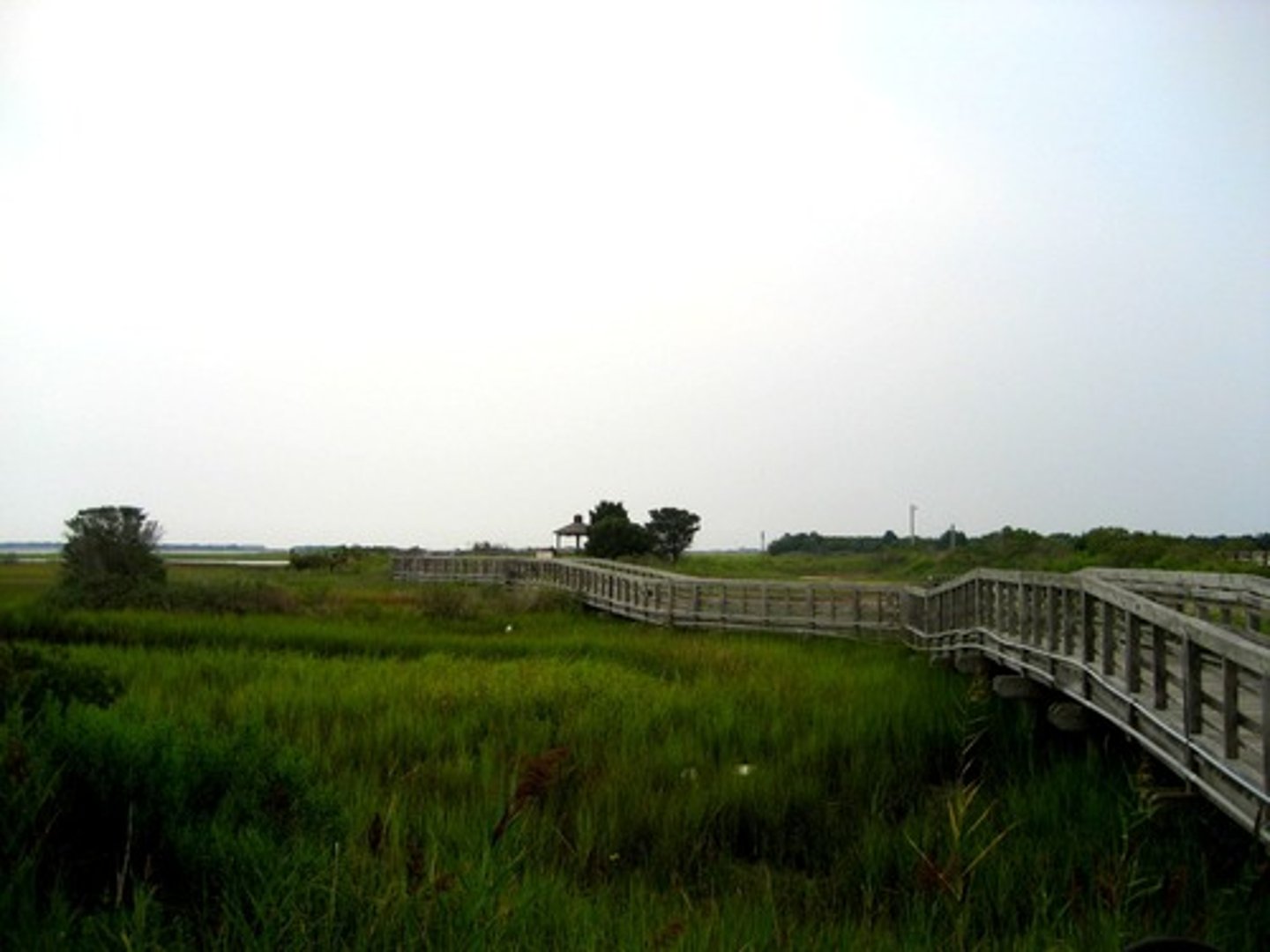
Serpentine Rock Outcrop info
Traits: Thin, rocky, nutrient-poor soils high in magnesium and heavy metals; sparse, unique flora.
Plant Adaptations: Metal tolerance, slow growth, endemism, small stature.
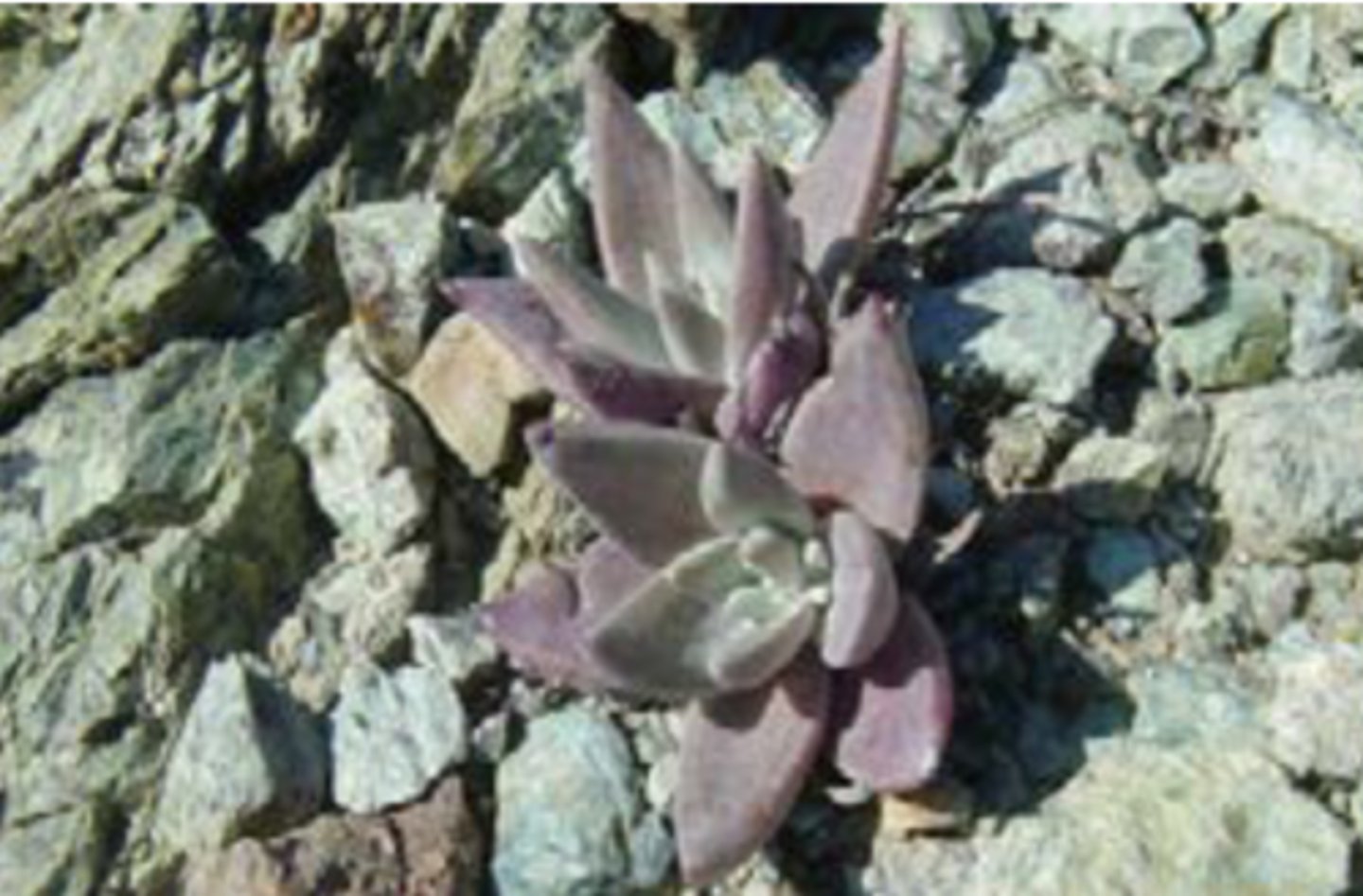
Oak Woodland info
Traits: Multi-tiered (canopy, understory, ground layer); dominated by oaks; rich soils; moist microclimate.
Plant Adaptations: Shade tolerance, deep roots, acorn production, diverse understory plants.
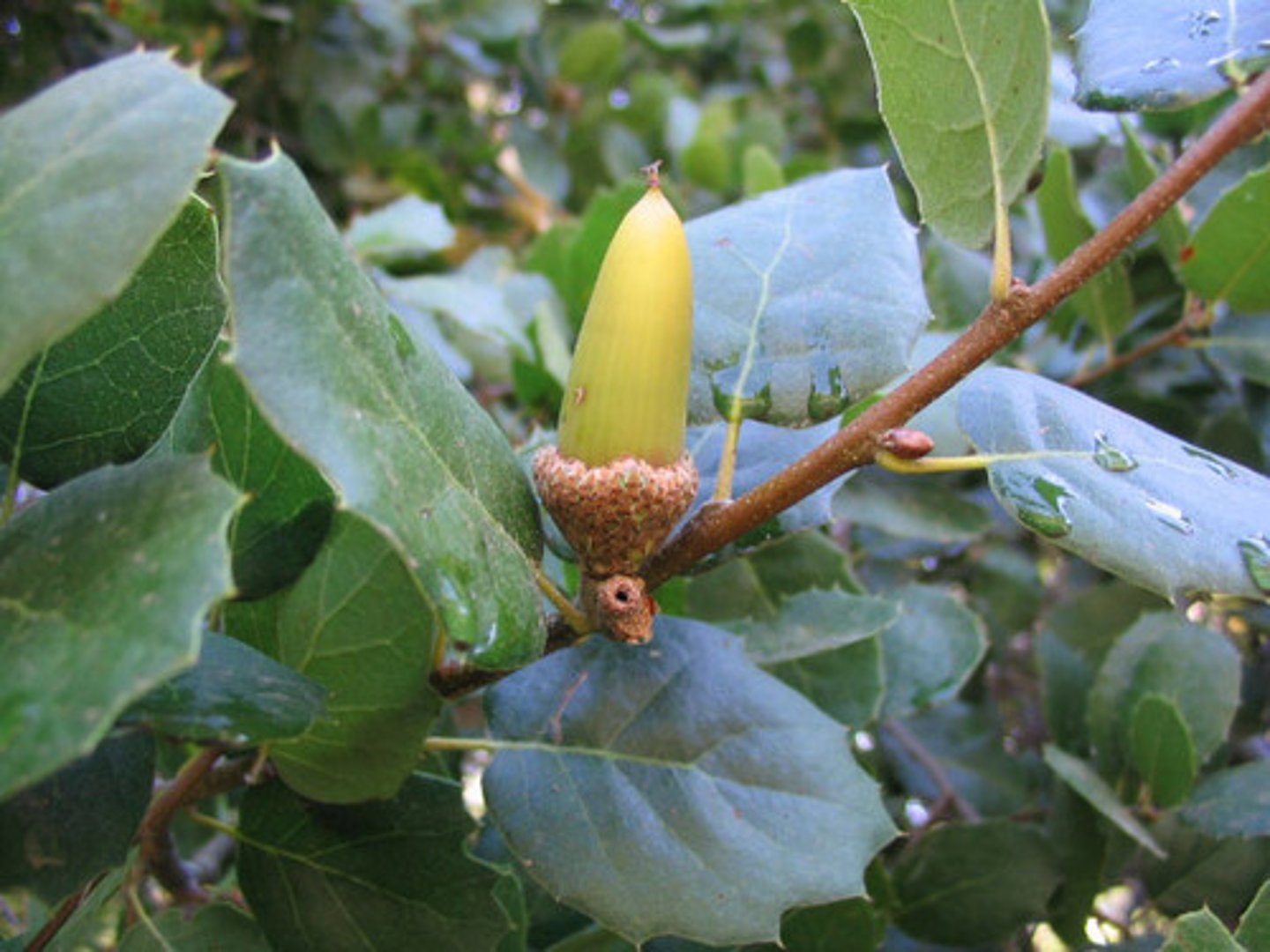
Riparian info
Traits: Along streams/rivers; lush, water-loving trees and shrubs; high biodiversity.
Plant Adaptations: Tolerance of flooding, fast growth, flexible stems, large leaves for photosynthesis.
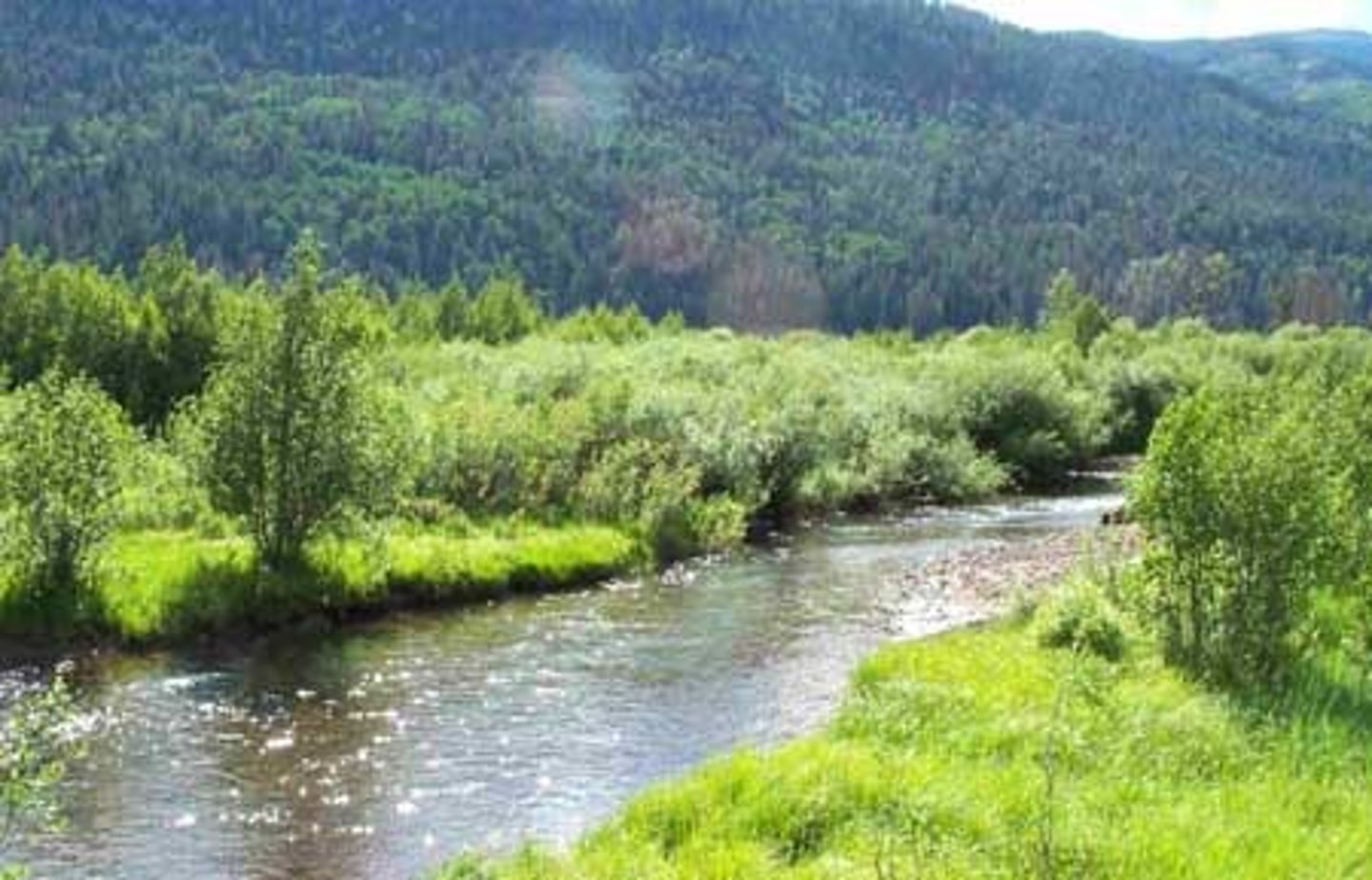
Coastal Dune Scrub info
Traits: Low, wind-pruned, salt-tolerant shrubs; sandy, shifting soils; high endemism.
Plant Adaptations: Deep taproots, hairy leaves, prostrate growth, rapid colonization of bare sand.
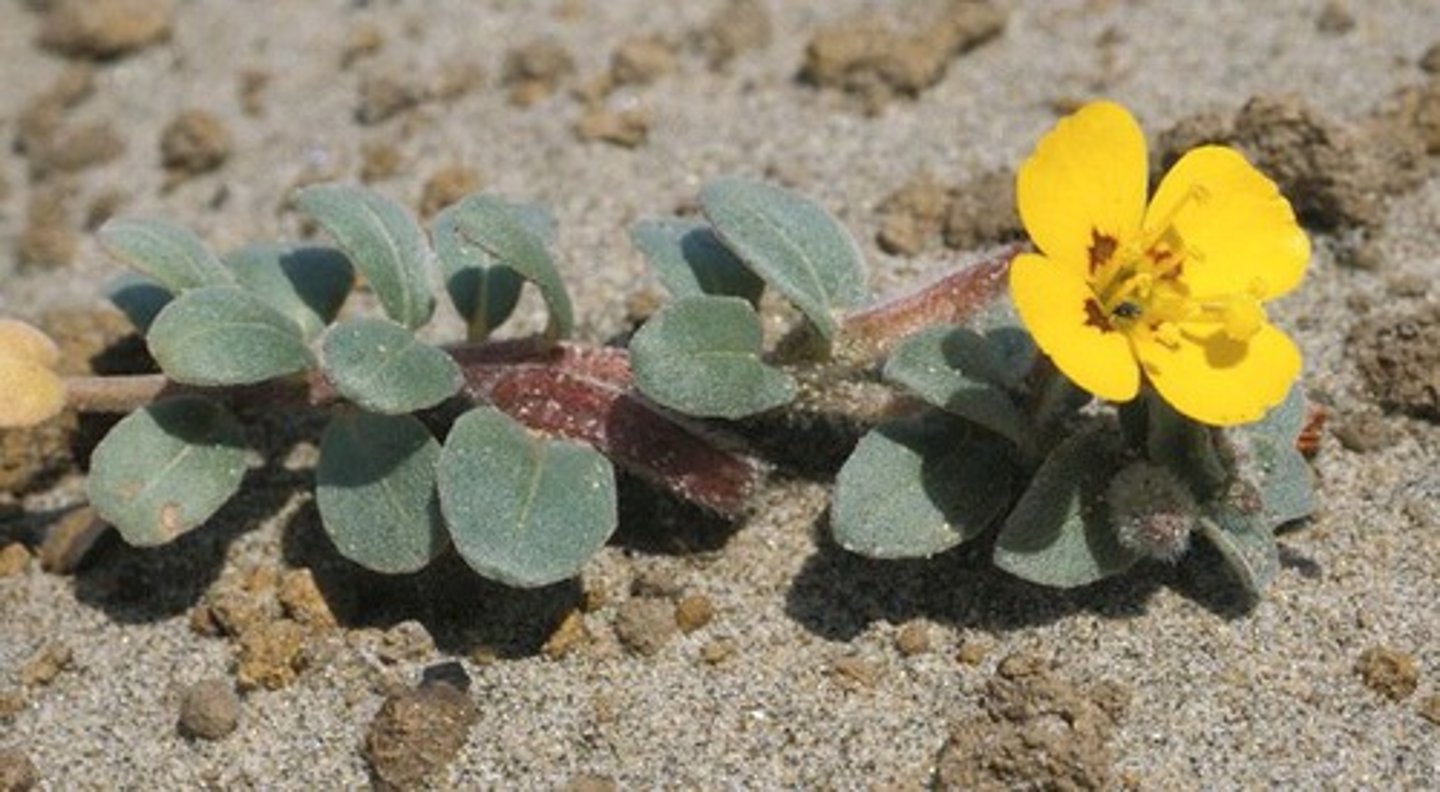
Maritime Chaparral info
Traits: Fog-influenced shrubland; high endemism; often restricted to coastal ridges.
Plant Adaptations: Fog capture, thick leaves, fire adaptation, slow growth.
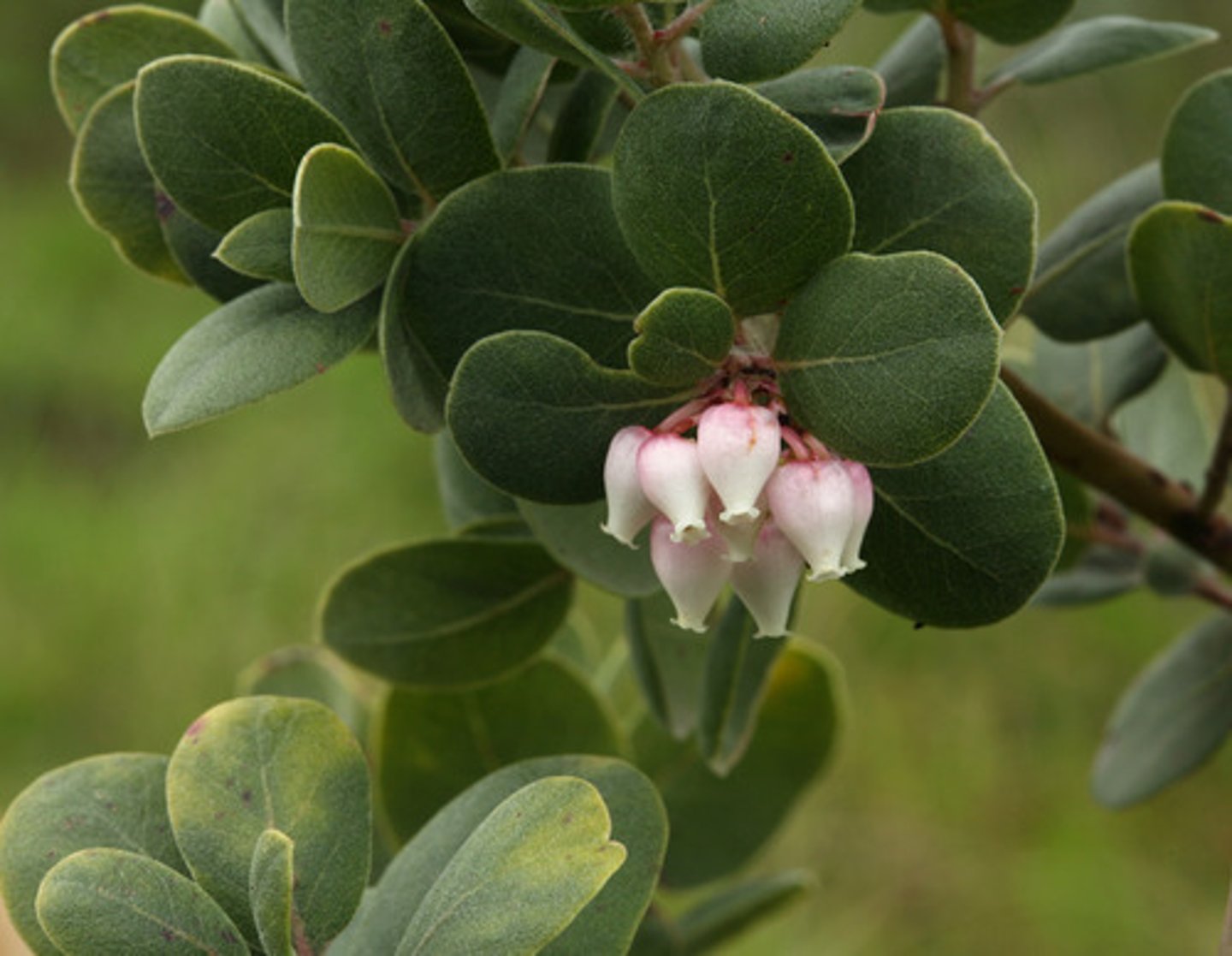
Anthropogenic/Disturbed info
Traits: Dominated by non-native annuals; result of agriculture, grazing, or development.
Plant Adaptations: Rapid lifecycle, prolific seed production, disturbance tolerance.
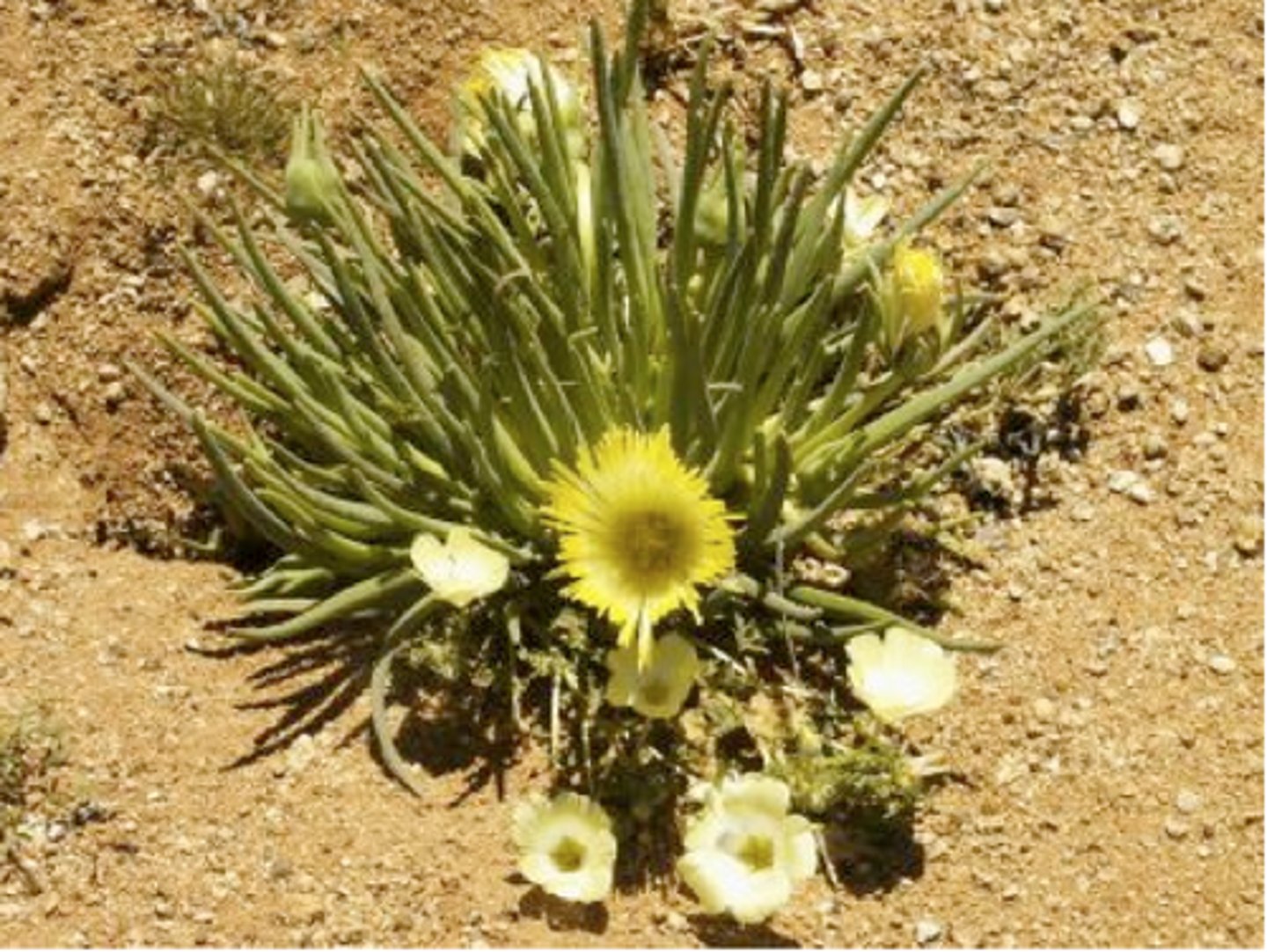
Pygmy Oak Woodland/Epiphyte info
Traits: Stunted oaks due to poor soils or wind; supports unique epiphytes like lace lichen.
Plant Adaptations: Miniaturization, epiphytism (lichens), wind pruning.
